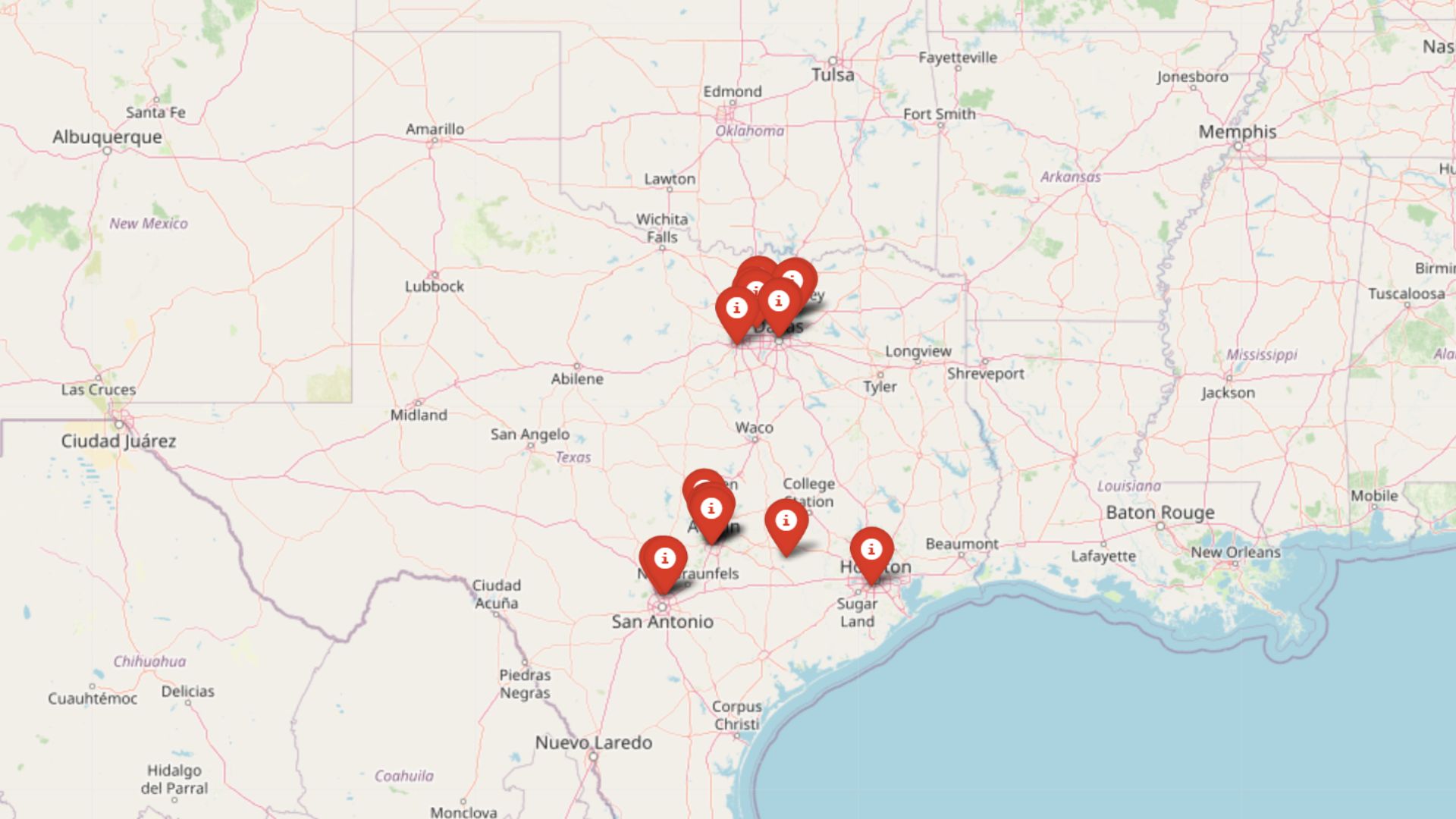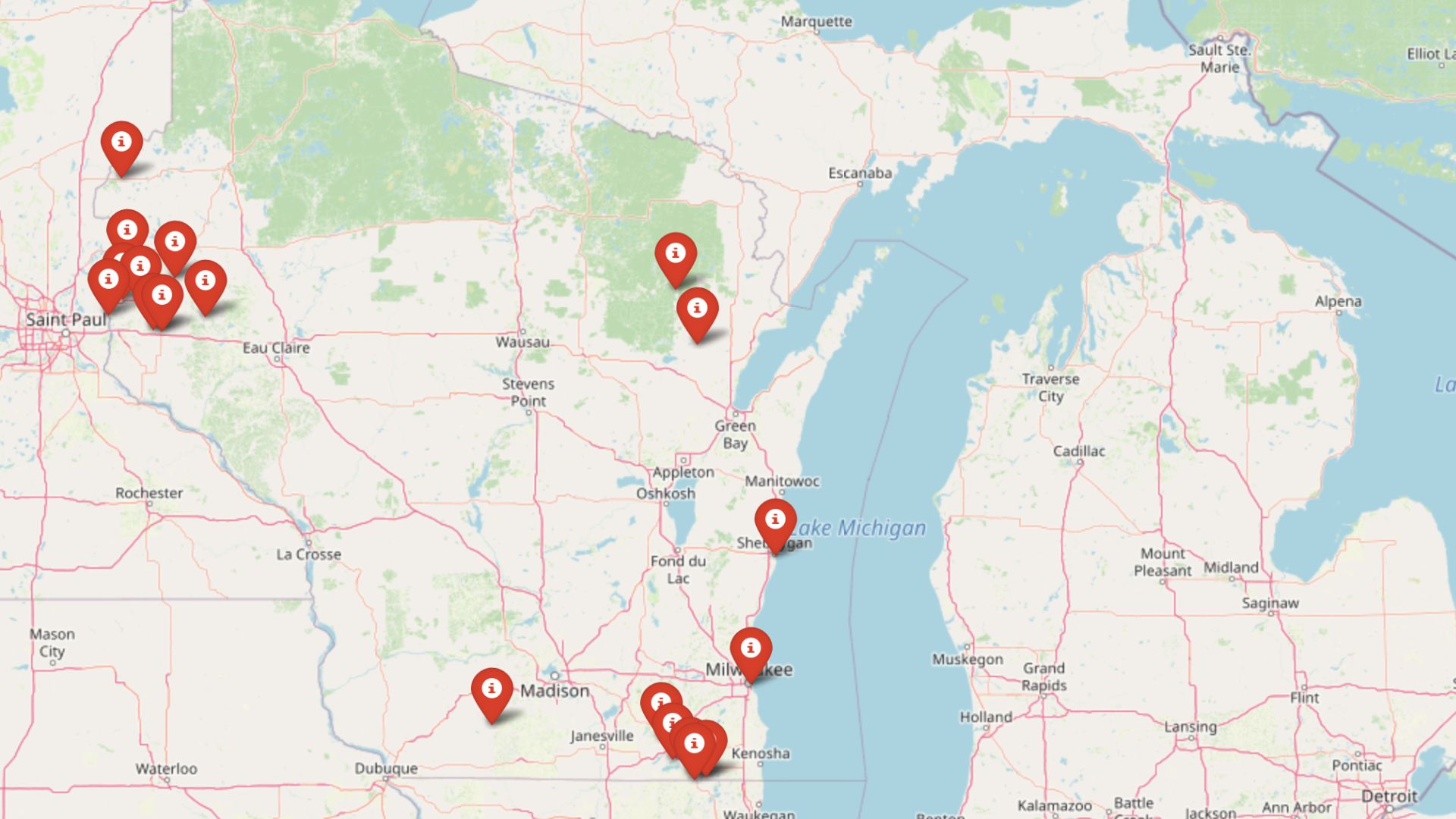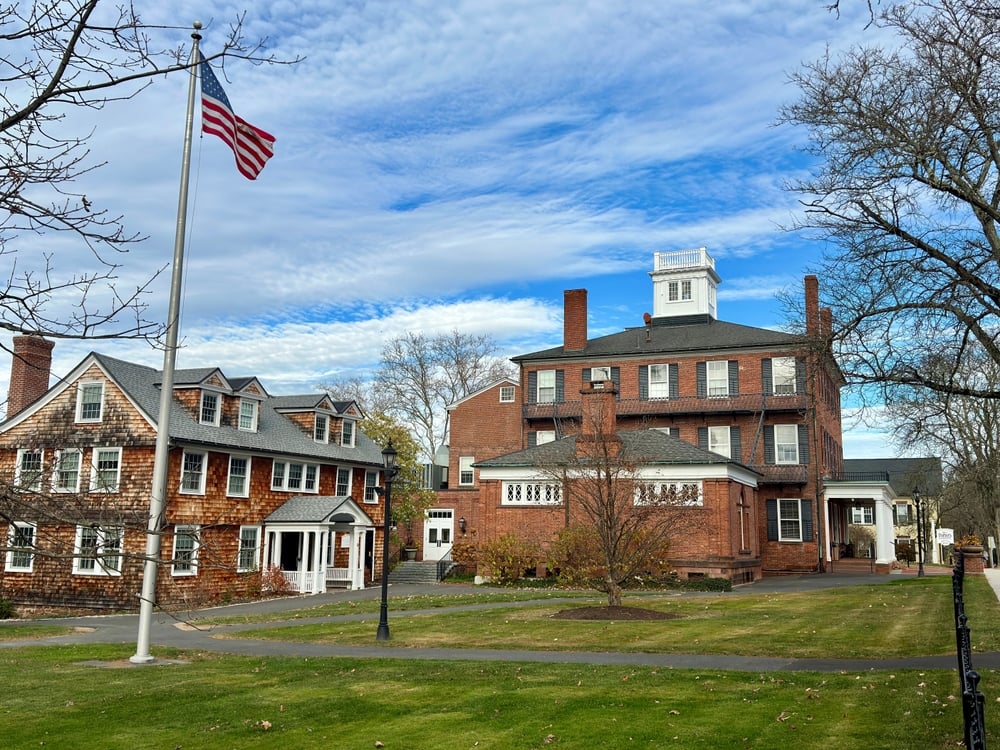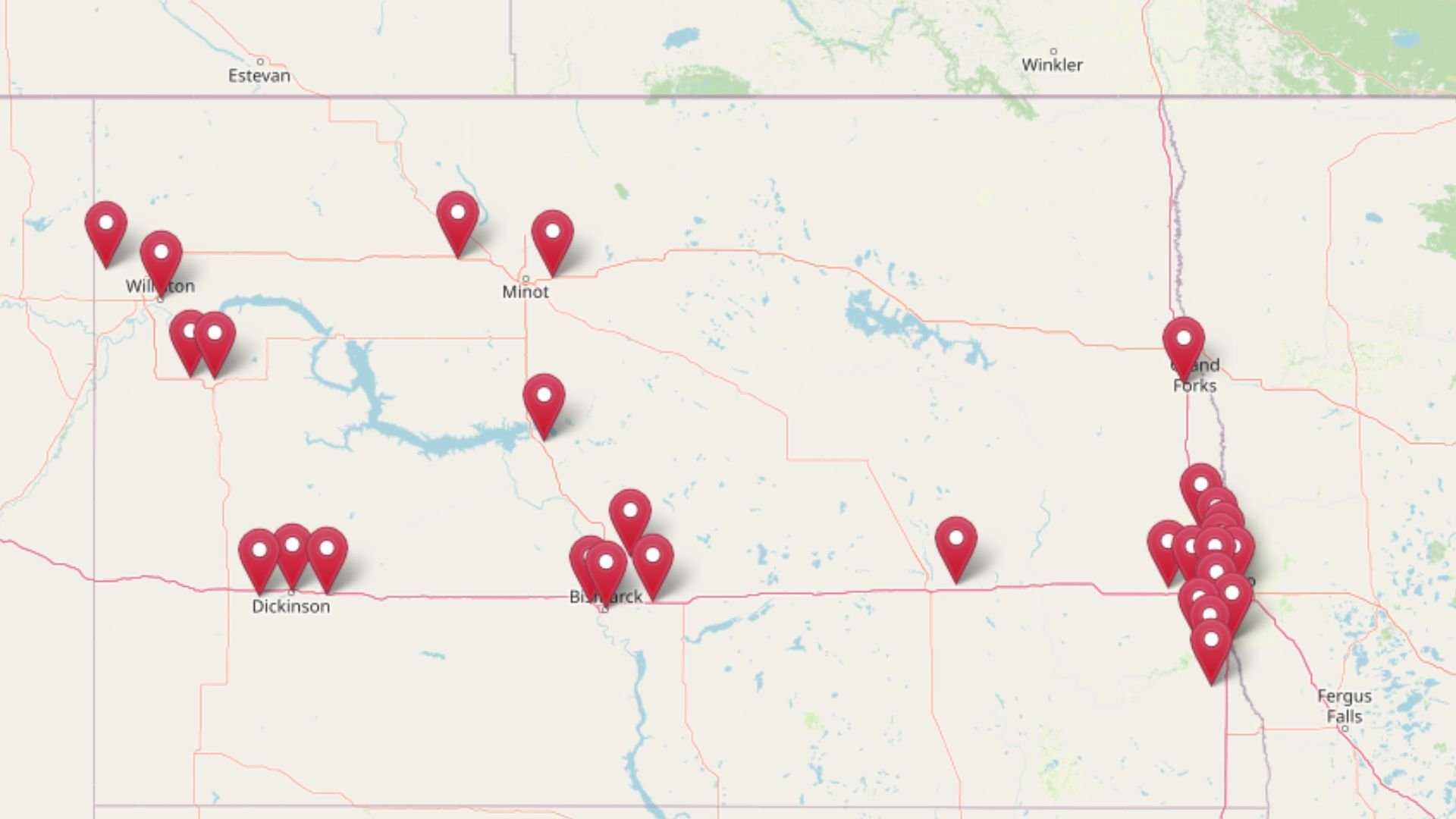
Using the latest Zillow Home Value Index data, we’ve ranked the 30 most expensive towns in North Dakota based on current home prices. These communities reveal striking patterns in North Dakota’s housing market, from oil boom towns to suburban enclaves near major cities. Many show dramatic price swings tied to economic cycles and geographic advantages.
From Fargo suburbs commanding top dollar to small prairie towns with surprising price tags, each location tells a unique story about growth, decline, and recovery. Whether you’re tracking market trends, considering a move, or exploring investment opportunities, these rankings offer insight into where North Dakota’s real estate values have peaked—and what drives those prices.
30. Davenport – -9% Home Price Decrease Since 2022

- 2010: N/A
- 2011: N/A
- 2012: N/A
- 2013: N/A
- 2014: N/A
- 2015: N/A
- 2016: N/A
- 2017: N/A
- 2018: N/A
- 2019: N/A
- 2020: N/A
- 2021: N/A
- 2022: $344,309
- 2023: $318,366
- 2024: $304,076
- 2025: $312,994
Davenport has experienced a recent decline in home values, dropping 9% from its 2022 peak. The town saw its lowest point in 2024 at just over $304,000 before recovering slightly to nearly $313,000 in 2025. This pattern suggests market volatility in smaller communities where limited inventory can create dramatic price swings.
Why Davenport?
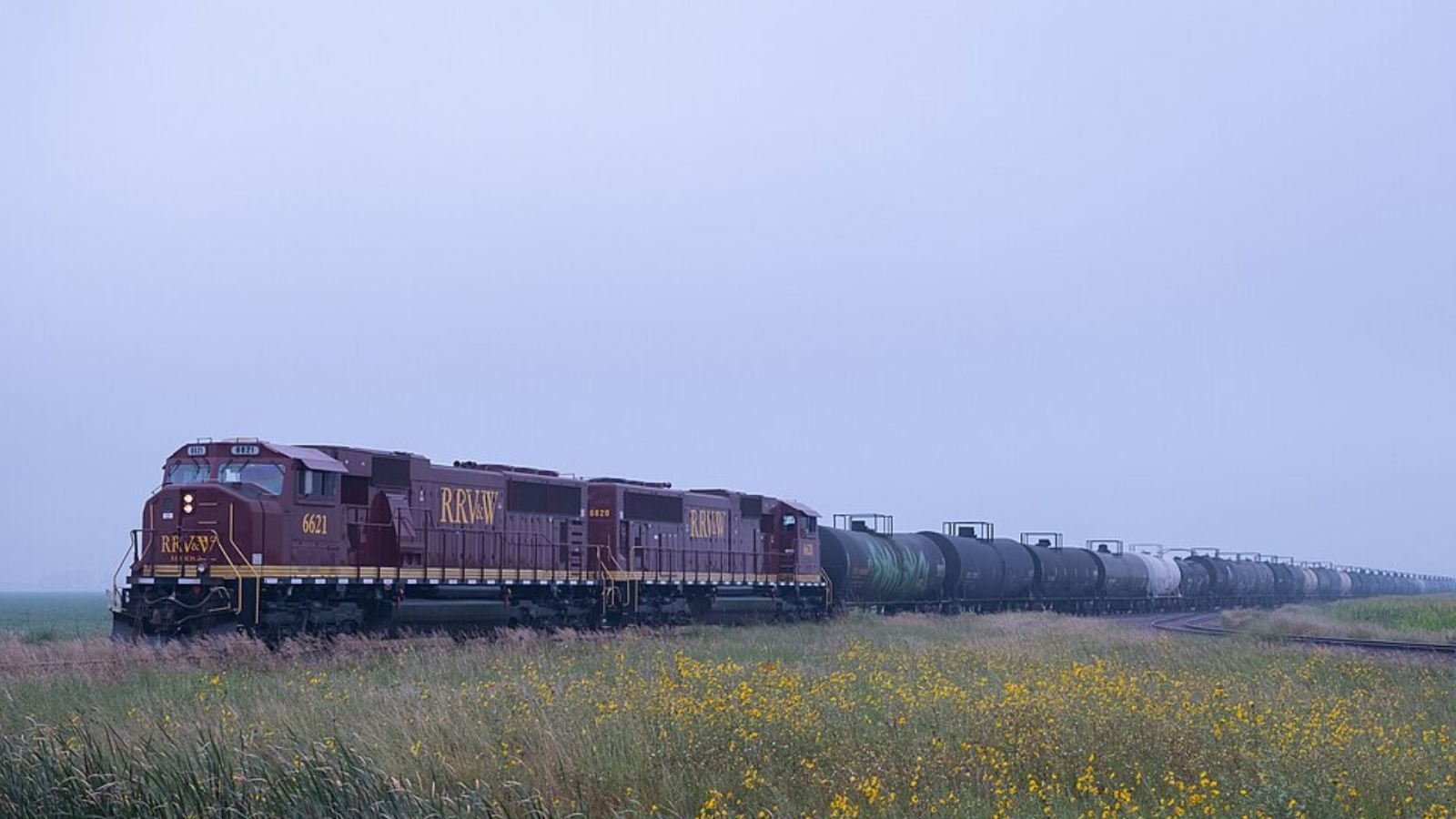
Why Are People Willing to Pay So Much to Live Here? What’s Special About It?
Davenport attracts residents seeking small-town tranquility without complete isolation from urban amenities. The community offers affordable housing relative to larger North Dakota cities while maintaining easy access to regional services. Buyers appreciate the area’s agricultural heritage and wide-open spaces that provide privacy and room to grow.
The town’s recent price volatility reflects broader market uncertainty in rural North Dakota communities. Despite recent declines, property values remain well above historical averages, indicating underlying demand for rural living options near larger population centers.
How Davenport Rose to Prominence
Davenport emerged as a railroad town in the early 1900s, serving the agricultural communities of southeastern North Dakota. The town’s location along transportation routes made it a natural gathering point for farmers and grain dealers. Like many small North Dakota communities, Davenport thrived during the agricultural boom years of the early 20th century.
The community maintained steady growth through the mid-century, supported by farming operations and regional commerce. Modern Davenport benefits from its proximity to larger cities while preserving its rural character, attracting residents who work in nearby urban centers but prefer small-town living.
3 Interesting Tidbits
1. Agricultural Heritage – Davenport sits in prime farmland, with many residents still connected to agricultural operations that have supported the area for over a century.
2. Population Stability – Despite market fluctuations, Davenport has maintained a remarkably stable population base, indicating strong community ties and local satisfaction.
3. Transportation Hub – The town’s original railroad connections have evolved into modern highway access, keeping it connected to regional commerce and employment opportunities.
29. Casselton – 42% Home Price Increase Since 2010

- 2010: $221,817
- 2011: $214,937
- 2012: $190,837
- 2013: $200,322
- 2014: $208,782
- 2015: $235,352
- 2016: $253,803
- 2017: $259,080
- 2018: $261,063
- 2019: $288,785
- 2020: $298,825
- 2021: $319,556
- 2022: $341,359
- 2023: $326,739
- 2024: $319,651
- 2025: $315,356
Casselton has shown steady long-term growth with a 42% increase since 2010, though recent years have brought some cooling. The town peaked in 2022 at over $341,000 before settling back to current levels around $315,000. This growth pattern reflects both the broader North Dakota boom and the community’s appeal as a commuter town near Fargo.
Why Casselton?

Why Are People Willing to Pay So Much to Live Here? What’s Special About It?
Casselton offers the perfect balance between small-town living and metropolitan access, sitting just 20 miles west of Fargo. Families are drawn to the excellent school system, safe neighborhoods, and strong community spirit that comes from a town small enough for everyone to know their neighbors. The area provides larger lots and newer construction options while keeping commute times manageable for Fargo workers.
The town has maintained its agricultural roots while embracing suburban growth, creating a unique environment where rural traditions blend with modern conveniences. Property values reflect this desirable combination, especially for buyers seeking family-friendly communities with room to grow.
How Casselton Rose to Prominence
Founded in 1880 along the Northern Pacific Railway, Casselton was named after George Washington Cass, a railroad executive and territorial governor. The town quickly became a major grain shipping point, with massive grain elevators that served farmers across the region. Its strategic railroad location made it one of the most important agricultural centers in early North Dakota.
The community evolved from a purely agricultural economy to embrace its role as a bedroom community for Fargo. Modern development has brought new subdivisions and amenities while preserving the town’s historic downtown and agricultural character. This careful balance has maintained Casselton’s appeal to both longtime residents and newcomers.
3 Interesting Tidbits
1. Elevator Heritage – Casselton was once home to some of the largest grain elevators in North Dakota, earning it the nickname “The Granary of the Red River Valley.”
2. School Pride – The Casselton Public School District consistently ranks among the top in the state, drawing families from surrounding areas seeking quality education.
3. Festival Town – The annual Casselton Fun Days celebration brings together thousands of visitors, showcasing the community’s strong social fabric and civic engagement.
28. Christine – 4% Home Price Increase Since 2024

- 2010: N/A
- 2011: N/A
- 2012: N/A
- 2013: N/A
- 2014: N/A
- 2015: N/A
- 2016: N/A
- 2017: N/A
- 2018: N/A
- 2019: N/A
- 2020: N/A
- 2021: N/A
- 2023: N/A
- 2024: $304,681
- 2025: $316,239
Christine represents a newer entry to the market data, with limited historical information available since 2024. The 4% increase to over $316,000 suggests modest appreciation in this small community. With only recent data available, Christine’s long-term trends remain to be established, though current values place it among North Dakota’s more expensive small towns.
Why Christine?
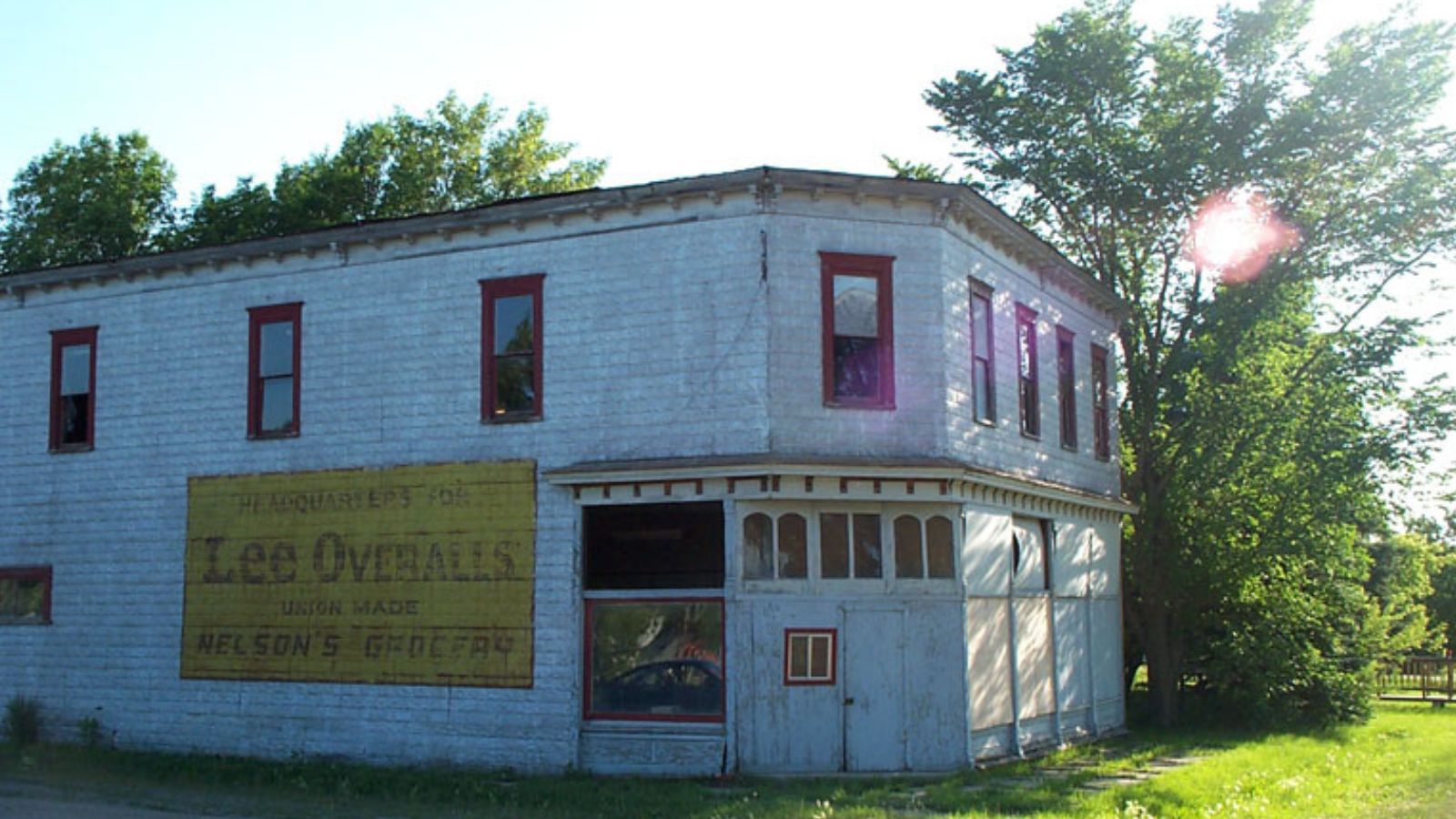
Why Are People Willing to Pay So Much to Live Here? What’s Special About It?
Christine appeals to buyers seeking rural tranquility with modern amenities in a tight-knit community setting. The town offers expansive properties and custom-built homes that provide privacy and space unavailable in denser areas. Residents value the peaceful environment and strong community connections that come from small-town living.
The area’s agricultural heritage creates a stable foundation for property values, while its location provides reasonable access to regional employment centers. Limited housing inventory helps maintain price stability even in uncertain market conditions.
How Christine Rose to Prominence
Christine developed as a small agricultural community in the early 1900s, serving local farming operations in the Red River Valley. The town grew slowly but steadily, supported by rich farmland and hardworking families who built a close-knit community. Like many North Dakota rural areas, Christine benefited from the region’s agricultural prosperity.
Modern Christine has evolved to attract residents seeking rural living with contemporary conveniences. The community has maintained its agricultural character while developing quality housing options that appeal to those working in nearby larger towns but preferring countryside living.
3 Interesting Tidbits
1. Agricultural Center – Christine sits in some of North Dakota’s most productive farmland, with agriculture remaining central to the local economy and community identity.
2. Community Events – Despite its small size, Christine maintains an active community calendar with local gatherings that strengthen neighborhood bonds and preserve rural traditions.
3. Modern Development – Recent housing developments have brought contemporary home designs while respecting the area’s rural character and agricultural legacy.
27. Fargo – 69% Home Price Increase Since 2010

- 2010: $188,319
- 2011: $184,821
- 2012: $175,757
- 2013: $185,945
- 2014: $197,023
- 2015: $219,941
- 2016: $236,334
- 2017: $242,314
- 2018: $243,742
- 2019: $255,650
- 2020: $260,985
- 2021: $269,574
- 2022: $292,586
- 2023: $302,804
- 2024: $307,887
- 2025: $318,214
Fargo has demonstrated consistent growth with a 69% increase since 2010, climbing steadily from under $190,000 to over $318,000. The city showed remarkable resilience through economic fluctuations, with only minor dips in the early 2010s before sustained appreciation. This growth reflects Fargo’s status as North Dakota’s economic and cultural center, driving steady demand for housing.
Why Fargo?
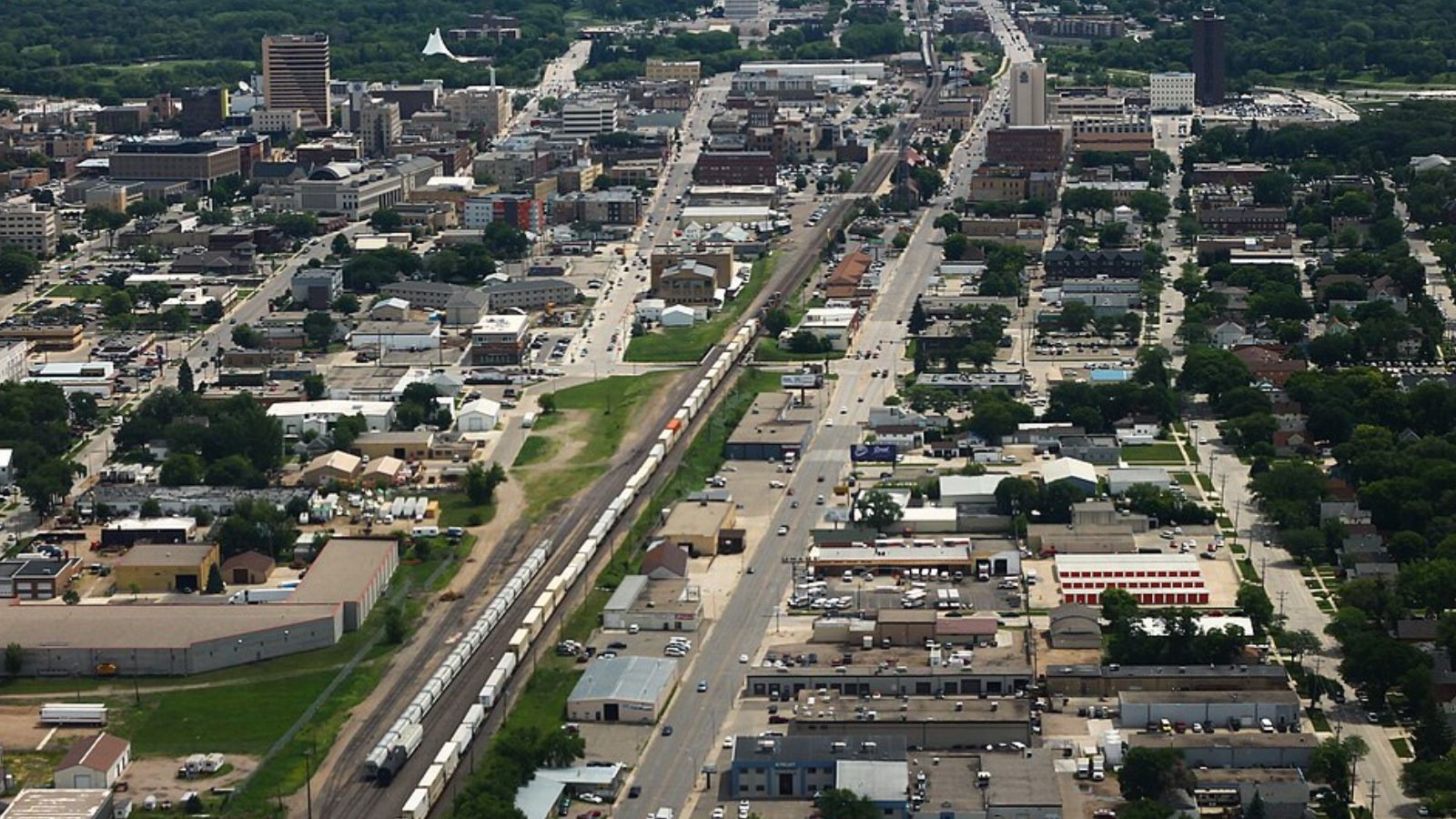
Why Are People Willing to Pay So Much to Live Here? What’s Special About It?
Fargo stands as North Dakota’s largest city, offering urban amenities, cultural attractions, and diverse employment opportunities unavailable elsewhere in the state. The city hosts major employers, excellent schools, and a thriving downtown district with restaurants, entertainment, and shopping. Young professionals and families appreciate the combination of career opportunities and affordable living compared to major metropolitan areas.
The presence of North Dakota State University adds energy and culture to the community while providing educational opportunities and research facilities. Fargo’s medical facilities, including major hospital systems, attract healthcare professionals and support a stable economic base that sustains property values.
How Fargo Rose to Prominence
Founded in 1871 and named after William Fargo of Wells Fargo Express, the city grew rapidly as a railroad hub connecting the Great Lakes to the Pacific Northwest. The Northern Pacific Railway made Fargo a crucial transportation center for agricultural products, establishing its role as the region’s commercial heart. Early growth was driven by grain trading, lumber mills, and agricultural processing.
The 20th century brought diversification with the establishment of North Dakota State University in 1890 and growth in manufacturing, healthcare, and technology sectors. Fargo survived agricultural downturns and economic cycles by developing a diverse economy that includes technology companies, financial services, and regional headquarters for major corporations.
3 Interesting Tidbits
1. Film Fame – The Coen Brothers’ movie “Fargo” brought international attention to the city, though most of the film was actually shot in Minnesota.
2. Flood Fighters – Fargo has invested heavily in flood protection systems along the Red River, including extensive dike systems and flood management infrastructure.
3. Technology Hub – The city has emerged as a regional technology center, hosting software companies and serving as a testing ground for new digital services due to its tech-savvy population.
26. South Heart – 125% Home Price Increase Since 2010

- 2010: $142,545
- 2011: $150,220
- 2012: $171,280
- 2013: $200,486
- 2014: $223,126
- 2015: $255,513
- 2016: $251,160
- 2017: $260,347
- 2018: $254,852
- 2019: $261,826
- 2020: $267,320
- 2021: $278,070
- 2022: $294,574
- 2023: $291,866
- 2024: $293,936
- 2025: $320,118
South Heart has experienced remarkable growth with a 125% increase since 2010, more than doubling from around $142,000 to over $320,000. The most dramatic growth occurred during the oil boom years of 2012-2015, when values jumped by nearly 80%. Recent years have shown continued appreciation, with 2025 bringing values to new highs.
Why South Heart?
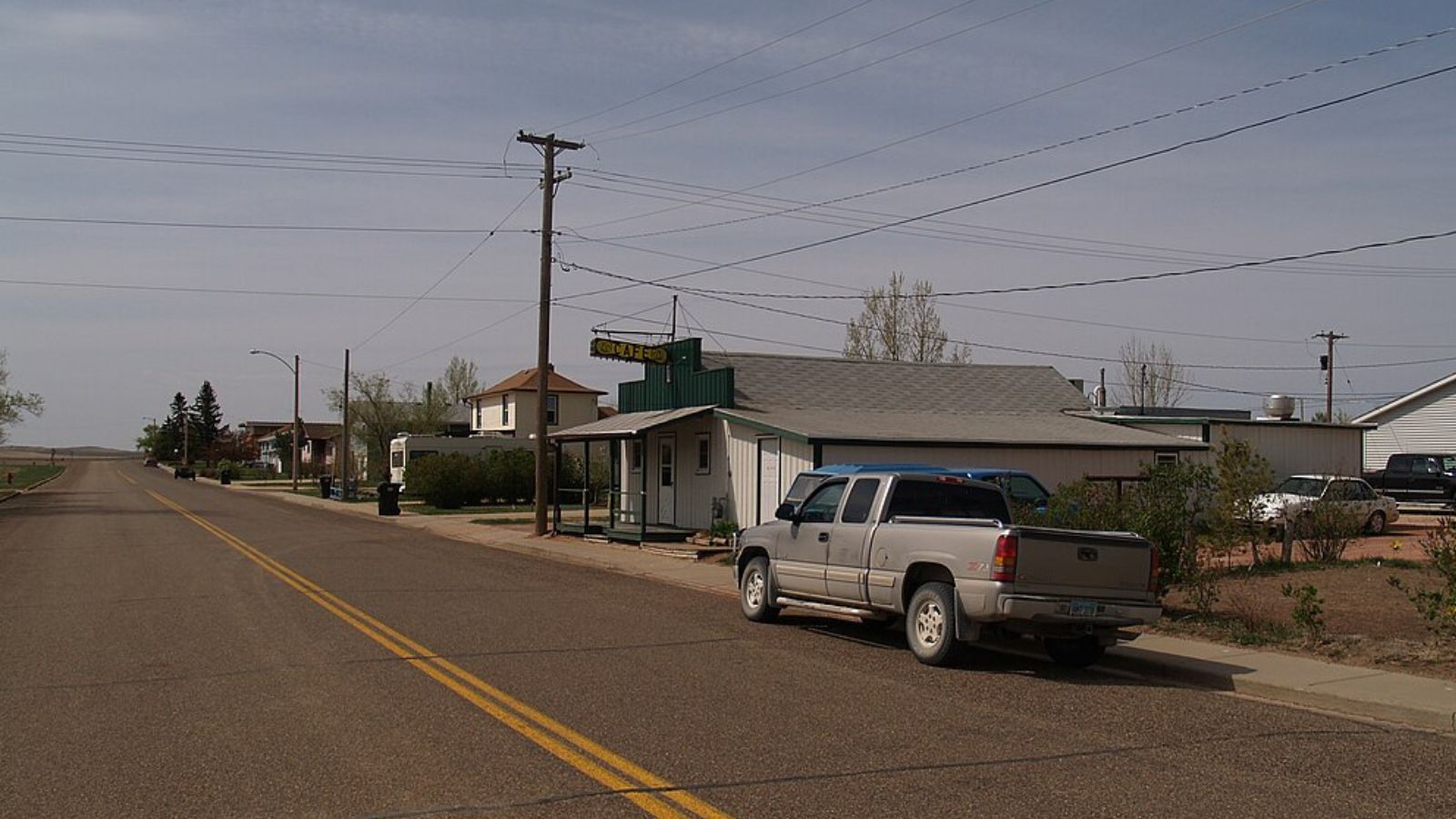
Why Are People Willing to Pay So Much to Live Here? What’s Special About It?
South Heart benefits tremendously from its location in the heart of North Dakota’s Bakken oil region, attracting workers and families connected to the energy industry. The town offers small-community living with access to high-paying oil jobs, creating a unique economic advantage. Residents enjoy low crime rates, strong community ties, and the financial opportunities that come with energy sector employment.
The area’s dramatic economic transformation has brought modern amenities and infrastructure improvements while maintaining its rural character. Property values reflect both the energy boom’s impact and the town’s ability to provide stable housing for oil industry workers and their families.
How South Heart Rose to Prominence
Originally established as a small farming community in the early 1900s, South Heart remained a quiet agricultural town for most of its history. The discovery and development of the Bakken oil formation completely transformed the area starting in the 2000s, bringing unprecedented economic growth and population increases. Oil workers and support staff flooded into the region, creating sudden demand for housing.
The town adapted quickly to its new role as an energy sector hub, expanding infrastructure and services to support the influx of workers. While maintaining its small-town character, South Heart has become a symbol of North Dakota’s oil boom transformation, attracting both temporary workers and permanent residents drawn to energy sector opportunities.
3 Interesting Tidbits
1. Oil Boom Transformation – South Heart’s population and housing values exploded during the Bakken oil boom, transforming it from a sleepy farming town to an energy sector hub.
2. Dickinson Connection – Located just southwest of Dickinson, South Heart provides small-town living with easy access to larger city amenities and services.
3. Modern Infrastructure – The energy boom brought significant infrastructure improvements, including upgraded roads, utilities, and telecommunications that benefit all residents.
25. Berthold – 49% Home Price Increase Since 2018

- 2010: N/A
- 2011: N/A
- 2012: N/A
- 2013: N/A
- 2014: N/A
- 2015: N/A
- 2016: N/A
- 2017: N/A
- 2018: $214,835
- 2019: $216,473
- 2020: $221,188
- 2021: $238,658
- 2022: $283,672
- 2023: $286,802
- 2024: $308,988
- 2025: $320,359
Berthold shows impressive recent growth with a 49% increase since 2018, climbing from around $215,000 to over $320,000. The most significant jump occurred between 2021 and 2022, when values increased by nearly $45,000 in a single year. This rapid appreciation continued through 2025, demonstrating strong demand in the Minot area market.
Why Berthold?
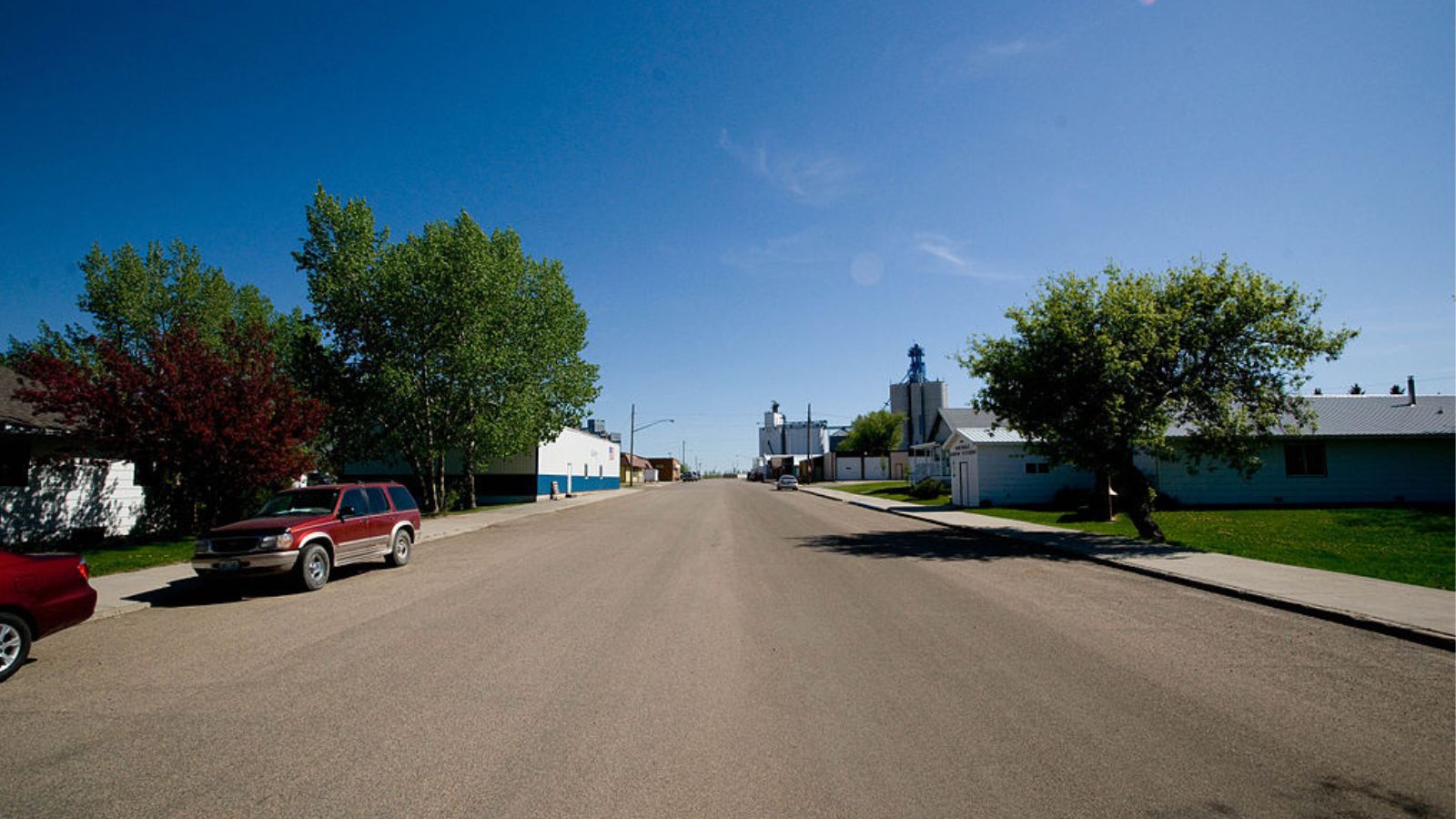
Why Are People Willing to Pay So Much to Live Here? What’s Special About It?
Berthold attracts residents seeking small-town living within commuting distance of Minot’s employment opportunities and services. The community offers newer housing developments with modern amenities while maintaining affordable living costs compared to larger cities. Families appreciate the safe environment, quality schools, and strong community connections that define small-town North Dakota.
The town’s location in Ward County provides access to both agricultural and energy sector opportunities, creating economic stability that supports property values. Limited housing inventory in desirable rural communities has driven competition and price appreciation among buyers seeking this lifestyle.
How Berthold Rose to Prominence
Berthold was established in the early 1900s as a railroad town along the Great Northern Railway, serving local farming communities in Ward County. Named after a railroad executive, the town grew as a grain shipping point and agricultural service center. For decades, Berthold remained a quiet farming community with a stable but small population.
Modern growth accelerated as Minot expanded and workers sought housing options outside the larger city. Berthold’s proximity to Minot Air Force Base and regional employment centers made it attractive to commuters wanting rural living with urban job access. Recent energy development in the region has further boosted demand for housing in nearby communities.
3 Interesting Tidbits
1. Railroad Heritage – Berthold’s origins as a Great Northern Railway town are still visible in its layout and historic railroad infrastructure that shaped the community’s development.
2. Agricultural Hub – The town continues to serve area farmers with grain storage and agricultural services that have been central to its economy for over a century.
3. Military Connection – Many residents work at nearby Minot Air Force Base, creating a stable employment base that supports local housing demand and property values.
24. Surrey – -8% Home Price Decrease Since 2014

- 2010: N/A
- 2011: N/A
- 2012: N/A
- 2013: N/A
- 2014: $351,088
- 2015: $359,028
- 2016: $322,315
- 2017: $302,464
- 2018: $276,348
- 2019: $272,263
- 2020: $272,506
- 2021: $285,722
- 2022: $300,548
- 2023: $312,335
- 2024: $315,422
- 2025: $321,799
Surrey experienced significant volatility over the past decade, peaking at nearly $359,000 in 2015 before declining to around $272,000 by 2019-2020. Since then, the market has recovered steadily, reaching $321,799 in 2025. This roller-coaster pattern likely reflects broader economic cycles affecting rural North Dakota communities, particularly those connected to energy and agricultural markets.
Why Surrey?
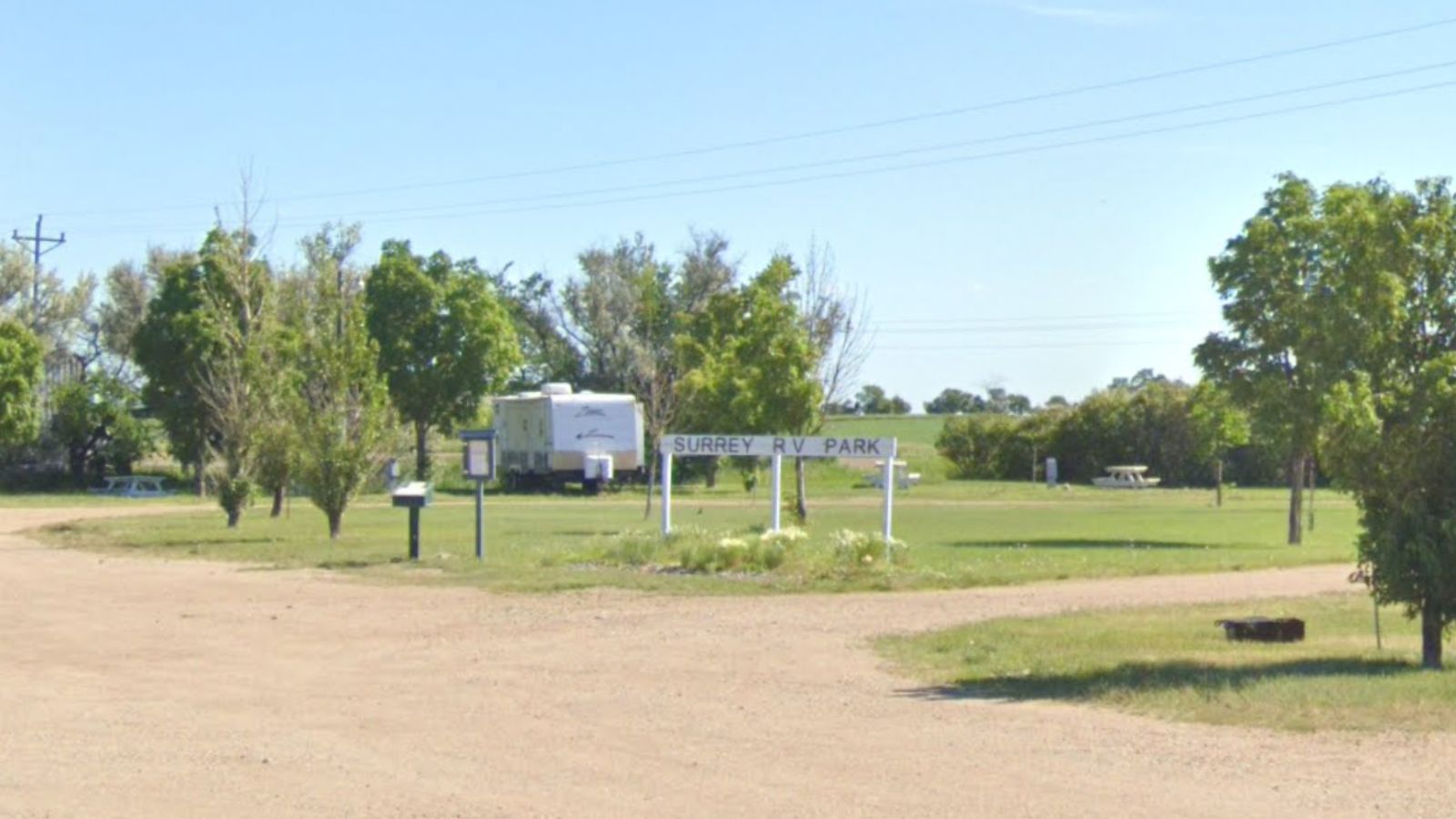
Why Are People Willing to Pay So Much to Live Here? What’s Special About It?
Surrey offers residents a genuine rural lifestyle with wide-open spaces, agricultural connections, and strong community bonds typical of small North Dakota towns. The area attracts buyers seeking privacy, larger properties, and escape from urban congestion while maintaining access to regional services. Local agriculture and energy sector connections provide economic opportunities that support higher property values.
The town’s recent market recovery suggests renewed confidence in rural North Dakota real estate, particularly in communities with good access to employment centers. Surrey’s property values reflect the premium buyers place on authentic small-town living combined with modern conveniences.
How Surrey Rose to Prominence
Surrey began as a small agricultural community in the early 1900s, established to serve local farming operations in Ward County. The town developed around grain elevators and agricultural services that supported area farmers. Like many North Dakota communities, Surrey’s early growth was tied directly to agricultural success and railroad access for shipping crops.
The community maintained steady growth through the mid-20th century before experiencing the boom-and-bust cycles that affected much of rural North Dakota. Recent years have brought renewed interest as buyers seek authentic rural living experiences and investment opportunities in small-town real estate markets.
3 Interesting Tidbits
1. Market Volatility – Surrey’s price swings from 2014-2020 demonstrate how smaller communities can experience dramatic value changes based on regional economic conditions.
2. Agricultural Base – The town remains deeply connected to farming operations, with many residents involved in agriculture either directly or through supporting businesses.
3. Recovery Story – Surrey’s recent price recovery illustrates the resilience of small North Dakota communities and renewed investor confidence in rural real estate.
23. Spiritwood Lake – 1% Home Price Increase Since 2022

- 2010: N/A
- 2011: N/A
- 2012: N/A
- 2013: N/A
- 2014: N/A
- 2015: N/A
- 2016: N/A
- 2017: N/A
- 2018: N/A
- 2019: N/A
- 2020: N/A
- 2021: N/A
- 2022: $320,380
- 2023: $308,595
- 2024: $303,362
- 2025: $324,423
Spiritwood Lake has shown minimal overall growth since 2022, with values fluctuating between $303,000 and $324,000. After dipping in 2023 and 2024, prices recovered in 2025 to exceed the 2022 starting point. This stability suggests a mature market where values have found equilibrium based on local demand and limited supply.
Why Spiritwood Lake?
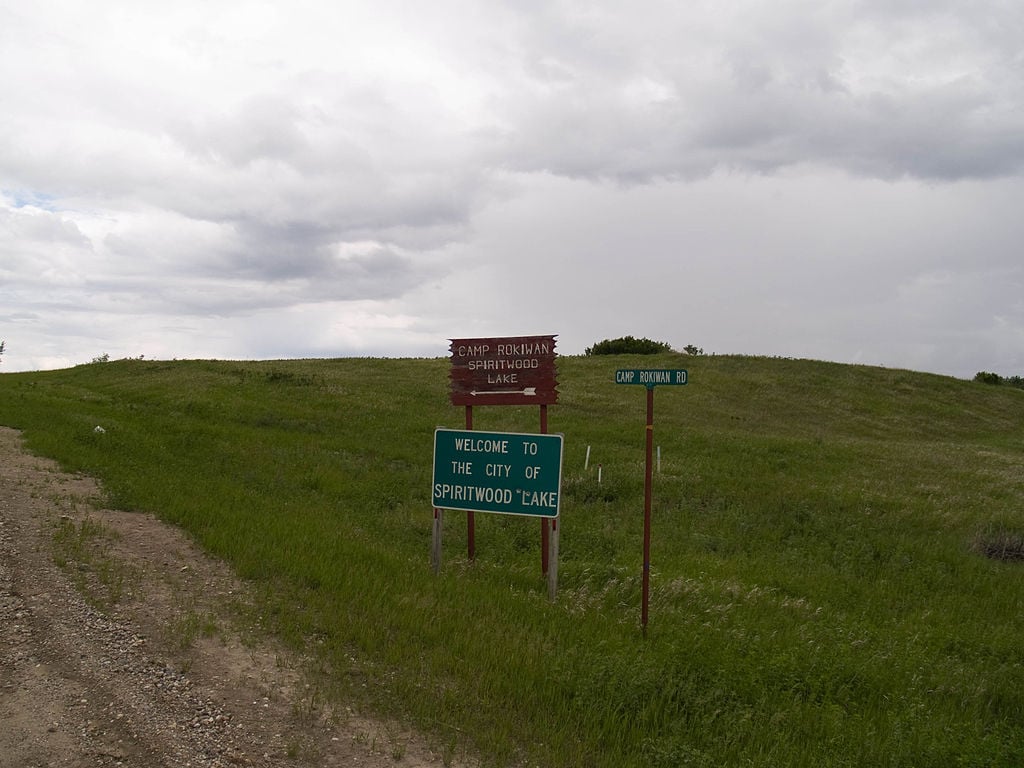
Why Are People Willing to Pay So Much to Live Here? What’s Special About It?
Spiritwood Lake attracts buyers seeking waterfront living and recreational opportunities in a pristine natural setting. The community offers lake access, fishing, boating, and outdoor activities that create a resort-like lifestyle year-round. Residents value the peaceful environment, scenic beauty, and recreational amenities that command premium prices in North Dakota’s real estate market.
The area’s limited development helps preserve its natural character while maintaining exclusivity that supports property values. Buyers often purchase homes here as primary residences for those who prioritize outdoor living or as vacation properties for recreational use.
How Spiritwood Lake Rose to Prominence
Spiritwood Lake developed as a recreational community around its namesake lake, which attracted outdoor enthusiasts and those seeking waterfront properties. The area’s natural beauty and recreational opportunities made it a desirable location for both permanent residents and seasonal property owners. Unlike many North Dakota towns founded around agriculture or railroads, Spiritwood Lake’s identity centered on recreation and natural amenities.
The community grew slowly but steadily as North Dakota residents sought vacation and recreational properties. Modern development has brought quality housing while preserving the area’s natural character, creating a unique market niche for waterfront and near-waterfront properties in the state.
3 Interesting Tidbits
1. Waterfront Premium – Lake access and water views command significantly higher prices than typical North Dakota rural property, reflecting the scarcity of quality waterfront real estate in the state.
2. Recreational Hub – The area serves as a destination for fishing, boating, and other water sports, attracting visitors and seasonal residents who contribute to the local economy.
3. Natural Preservation – Limited development around the lake helps maintain water quality and scenic beauty that are central to the community’s appeal and property values.
22. Dickinson – 77% Home Price Increase Since 2010

- 2010: $183,479
- 2011: $196,090
- 2012: $218,894
- 2013: $256,550
- 2014: $268,300
- 2015: $298,139
- 2016: $284,422
- 2017: $273,522
- 2018: $258,601
- 2019: $259,362
- 2020: $267,543
- 2021: $273,172
- 2022: $283,418
- 2023: $287,849
- 2024: $297,800
- 2025: $324,475
Dickinson shows strong long-term growth of 77% since 2010, though with significant volatility during the oil boom and adjustment periods. The city peaked around 2015 at nearly $298,000 before declining through 2019, then recovering steadily to current levels over $324,000. This pattern reflects Dickinson’s role as a major oil industry center experiencing boom-bust cycles.
Why Dickinson?
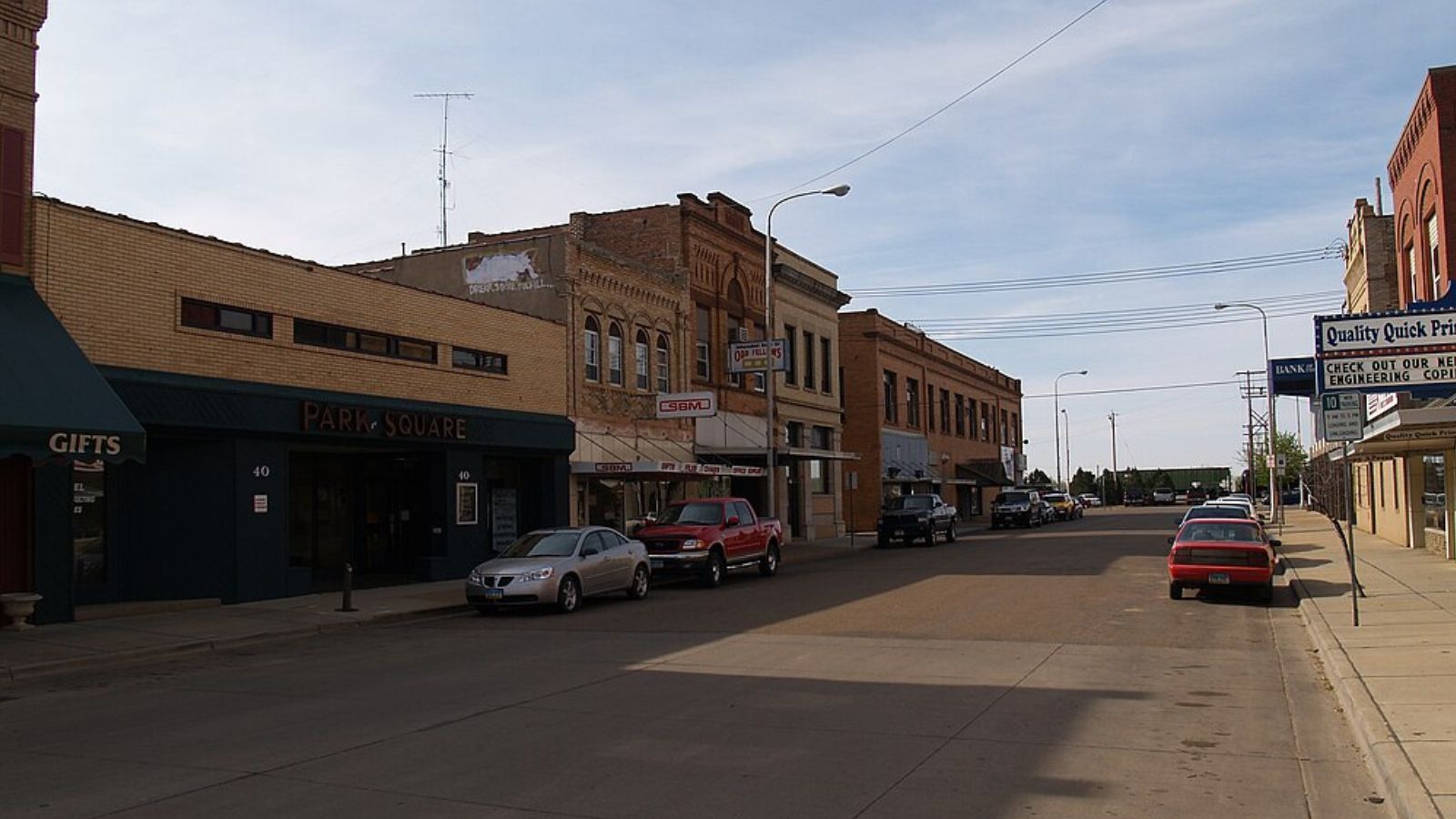
Why Are People Willing to Pay So Much to Live Here? What’s Special About It?
Dickinson serves as the unofficial capital of North Dakota’s oil region, offering urban amenities and services in the heart of Bakken development. The city provides excellent healthcare facilities, educational opportunities including Dickinson State University, and cultural amenities rare in rural areas. Energy sector workers appreciate the combination of high-paying jobs and relatively affordable living costs compared to other oil regions.
The community has invested heavily in infrastructure and quality-of-life improvements during the oil boom, creating lasting benefits that support property values. Dickinson offers the stability and services of a regional center while providing access to outdoor recreation in the nearby Badlands and Theodore Roosevelt National Park.
How Dickinson Rose to Prominence
Founded in 1880 along the Northern Pacific Railway, Dickinson began as a railroad town and agricultural center serving southwestern North Dakota. The city was named after Wells Dickinson, a railroad official, and quickly became a regional hub for cattle ranching and farming. Early growth was steady but modest, supported by agriculture and railroad operations.
The discovery and development of Bakken oil reserves transformed Dickinson from a quiet agricultural town into a major energy center. Starting in the 2000s, oil development brought massive population growth, new businesses, and significant infrastructure investment. The city has successfully managed this transformation while working to diversify its economy beyond energy dependence.
3 Interesting Tidbits
1. Badlands Gateway – Dickinson serves as the gateway to Theodore Roosevelt National Park and the North Dakota Badlands, attracting tourists and outdoor enthusiasts year-round.
2. University Town – Dickinson State University brings educational opportunities, cultural events, and economic stability that complement the energy sector economy.
3. Pioneer Heritage – The city maintains strong connections to its ranching and railroad heritage through museums, historic sites, and annual celebrations that preserve western North Dakota culture.
21. Mapleton – 62% Home Price Increase Since 2010

- 2010: $204,432
- 2011: $206,937
- 2012: $185,415
- 2013: $201,967
- 2014: $204,647
- 2015: $227,968
- 2016: $252,885
- 2017: $261,123
- 2018: $268,898
- 2019: $276,505
- 2020: $281,531
- 2021: $307,812
- 2022: $334,539
- 2023: $324,240
- 2024: $323,146
- 2025: $331,178
Mapleton demonstrates strong growth of 62% since 2010, climbing from around $204,000 to over $331,000. The town showed steady appreciation through most periods, with particularly strong gains from 2020-2022 when values jumped nearly $53,000. Recent years have brought some moderation but values remain near historic highs, reflecting sustained demand for this Fargo-area community.
Why Mapleton?

Why Are People Willing to Pay So Much to Live Here? What’s Special About It?
Mapleton offers residents the ideal combination of rural living and metropolitan access, located just west of Fargo in Cass County. Families are drawn to the excellent school district, safe neighborhoods, and larger lots that provide space for gardens, workshops, and outdoor activities. The community maintains its agricultural character while offering modern amenities and quality housing options.
Commuters appreciate the short drive to Fargo employment while enjoying small-town benefits like lower traffic, closer community connections, and more affordable property taxes. The area’s continued development has brought newer subdivisions and custom homes that appeal to buyers seeking contemporary living in a rural setting.
How Mapleton Rose to Prominence
Established in the 1870s as a farming community in the fertile Red River Valley, Mapleton grew around agriculture and grain shipping operations. The town’s location along railroad lines made it an important stop for farmers bringing crops to market. Norwegian and German immigrants were among the early settlers who established the farming traditions that continue today.
As Fargo expanded westward, Mapleton transformed into a desirable bedroom community while preserving its rural character. The town has carefully managed growth to maintain its small-town appeal while accommodating families seeking alternatives to urban living. Modern Mapleton successfully balances agricultural heritage with suburban convenience.
3 Interesting Tidbits
1. Valley Location – Mapleton sits in the heart of the Red River Valley, known for some of the world’s most fertile farmland and spectacular prairie sunsets.
2. School Excellence – The Mapleton Public School District consistently receives high ratings, drawing families from surrounding areas seeking quality education for their children.
3. Agricultural Heritage – Many residents maintain connections to farming through family operations, hobby farms, or agricultural businesses that keep the town tied to its roots.
20. Gardner – 6% Home Price Increase Since 2022

- 2010: N/A
- 2011: N/A
- 2012: N/A
- 2013: N/A
- 2014: N/A
- 2015: N/A
- 2016: N/A
- 2017: N/A
- 2018: N/A
- 2019: N/A
- 2020: N/A
- 2021: N/A
- 2022: $316,642
- 2023: $313,539
- 2024: $323,220
- 2025: $334,364
Gardner shows modest recent growth with a 6% increase since 2022, rising from around $317,000 to over $334,000. The market experienced a small dip in 2023 before recovering and reaching new highs in 2025. This steady appreciation suggests a stable market where values are supported by consistent local demand and limited housing inventory.
Why Gardner?
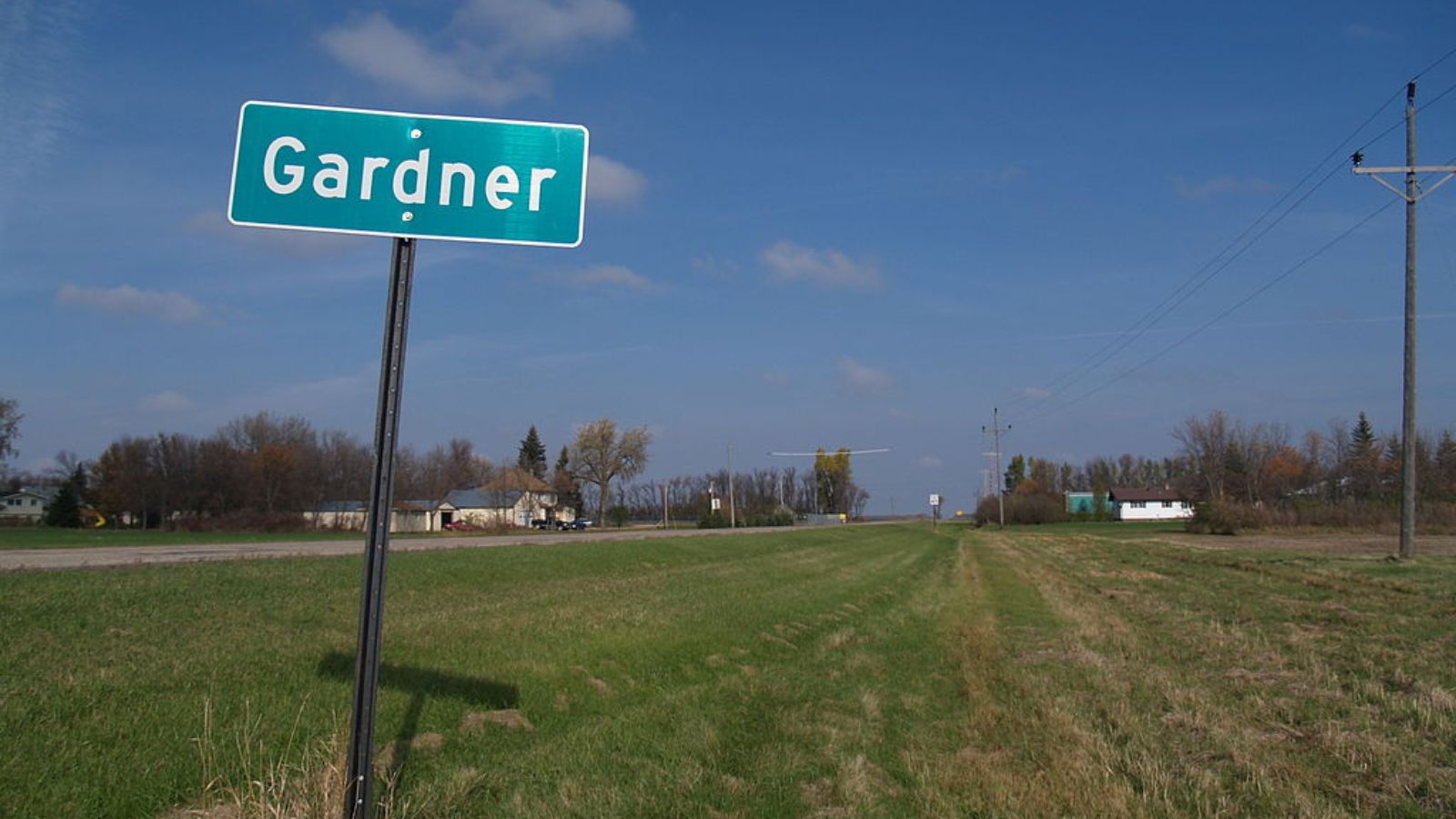
Why Are People Willing to Pay So Much to Live Here? What’s Special About It?
Gardner attracts residents seeking rural tranquility with modern conveniences in a well-established farming community. The town offers larger properties, custom-built homes, and agricultural connections that appeal to buyers wanting authentic country living. Residents appreciate the strong community spirit, low crime rates, and peaceful environment that small North Dakota towns provide.
The area’s agricultural stability creates a solid economic foundation that supports property values, while limited housing development maintains exclusivity. Gardner offers the space and privacy that many modern buyers seek, along with the community connections that make small-town living appealing.
How Gardner Rose to Prominence
Gardner developed as a small agricultural community in the early 1900s, serving local farming operations in Cass County. The town grew around grain storage and agricultural services that supported area farmers throughout the growing seasons. Early settlers were primarily Norwegian and German immigrants who established the farming traditions that continue today.
The community maintained steady growth through agricultural prosperity while adapting to modern farming techniques and economic changes. Gardner has preserved its rural character while attracting new residents who appreciate both agricultural heritage and contemporary living standards in a peaceful setting.
3 Interesting Tidbits
1. Farming Heritage – Gardner remains deeply connected to agriculture, with many residents involved in farming operations that have sustained the community for over a century.
2. Modern Amenities – Despite its rural setting, Gardner offers contemporary housing options and modern conveniences that attract buyers seeking country living without sacrificing comfort.
3. Community Stability – The town has maintained a remarkably stable population and property market, indicating strong resident satisfaction and local economic health.
19. Gladstone – 27% Home Price Increase Since 2021

- 2010: N/A
- 2011: N/A
- 2012: N/A
- 2013: N/A
- 2014: N/A
- 2015: N/A
- 2016: N/A
- 2017: N/A
- 2018: N/A
- 2019: N/A
- 2020: N/A
- 2021: $263,769
- 2022: $286,821
- 2023: $294,248
- 2024: $308,081
- 2025: $335,853
Gladstone has experienced strong recent growth with a 27% increase since 2021, climbing from around $264,000 to nearly $336,000. The town has shown consistent year-over-year appreciation, with particularly strong gains in 2025. This upward trajectory suggests growing demand for housing in western North Dakota communities connected to the energy sector.
Why Gladstone?
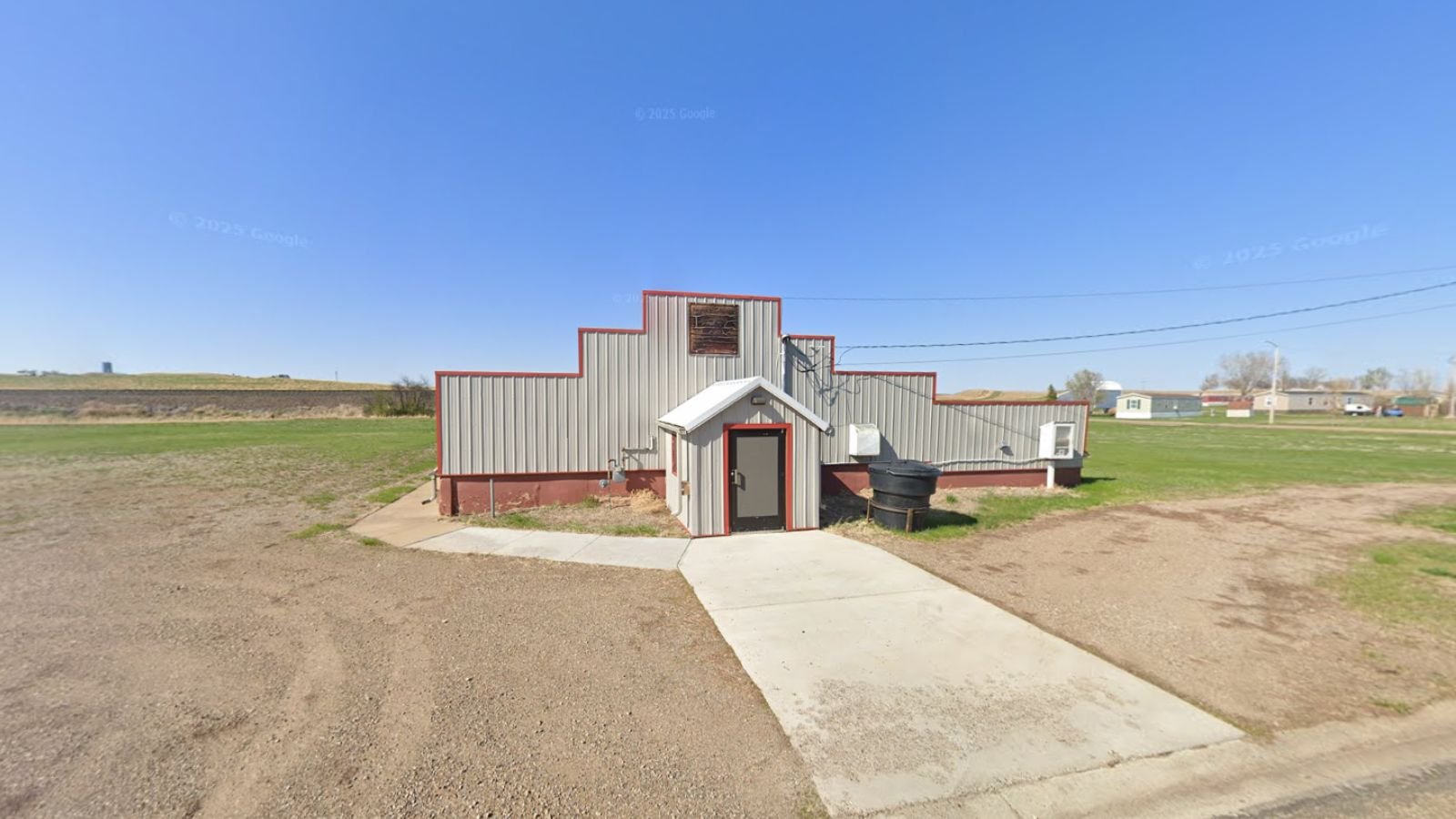
Why Are People Willing to Pay So Much to Live Here? What’s Special About It?
Gladstone benefits from its location in Stark County within the Dickinson metropolitan area, offering small-town living with access to energy sector employment. The community provides newer housing developments, low crime rates, and strong schools that appeal to families working in the oil industry. Residents enjoy the prosperity of the Bakken region while maintaining rural lifestyle benefits.
The town’s rapid growth reflects the ongoing strength of North Dakota’s energy sector and the premium buyers place on quality housing in oil-producing regions. Gladstone offers modern amenities and community services that support family life while providing access to high-paying energy jobs.
How Gladstone Rose to Prominence
Gladstone emerged as a small agricultural community in the early 1900s, serving local farming and ranching operations in southwestern North Dakota. The town remained relatively quiet for most of its history, supported by agriculture and modest population growth. The discovery and development of Bakken oil reserves dramatically changed the area’s economic prospects starting in the 2000s.
Oil development brought new residents, businesses, and infrastructure investment that transformed Gladstone from a sleepy farming town into a growing community. The town has adapted to accommodate energy workers and their families while maintaining its small-town character and community connections.
3 Interesting Tidbits
1. Energy Transformation – Gladstone’s growth mirrors the broader transformation of western North Dakota from agricultural to energy-focused economy.
2. Modern Development – Recent housing developments feature contemporary designs and amenities that attract young families and energy sector professionals.
3. Regional Access – The town’s location provides easy access to Dickinson’s services and amenities while maintaining the benefits of small-community living.
18. Coleharbor – 30% Home Price Increase Since 2017

- 2010: N/A
- 2011: N/A
- 2012: N/A
- 2013: N/A
- 2014: N/A
- 2015: N/A
- 2016: N/A
- 2017: $260,552
- 2018: $261,153
- 2019: $257,442
- 2020: $267,968
- 2021: $296,180
- 2022: $325,373
- 2023: $313,709
- 2024: $324,869
- 2025: $337,944
Coleharbor has shown solid growth of 30% since 2017, rising from around $261,000 to nearly $338,000. The most significant appreciation occurred from 2020-2022, when values jumped over $57,000 in two years. Despite a small dip in 2023, the market has continued climbing to new highs, reflecting the community’s appeal as a lakefront destination.
Why Coleharbor?
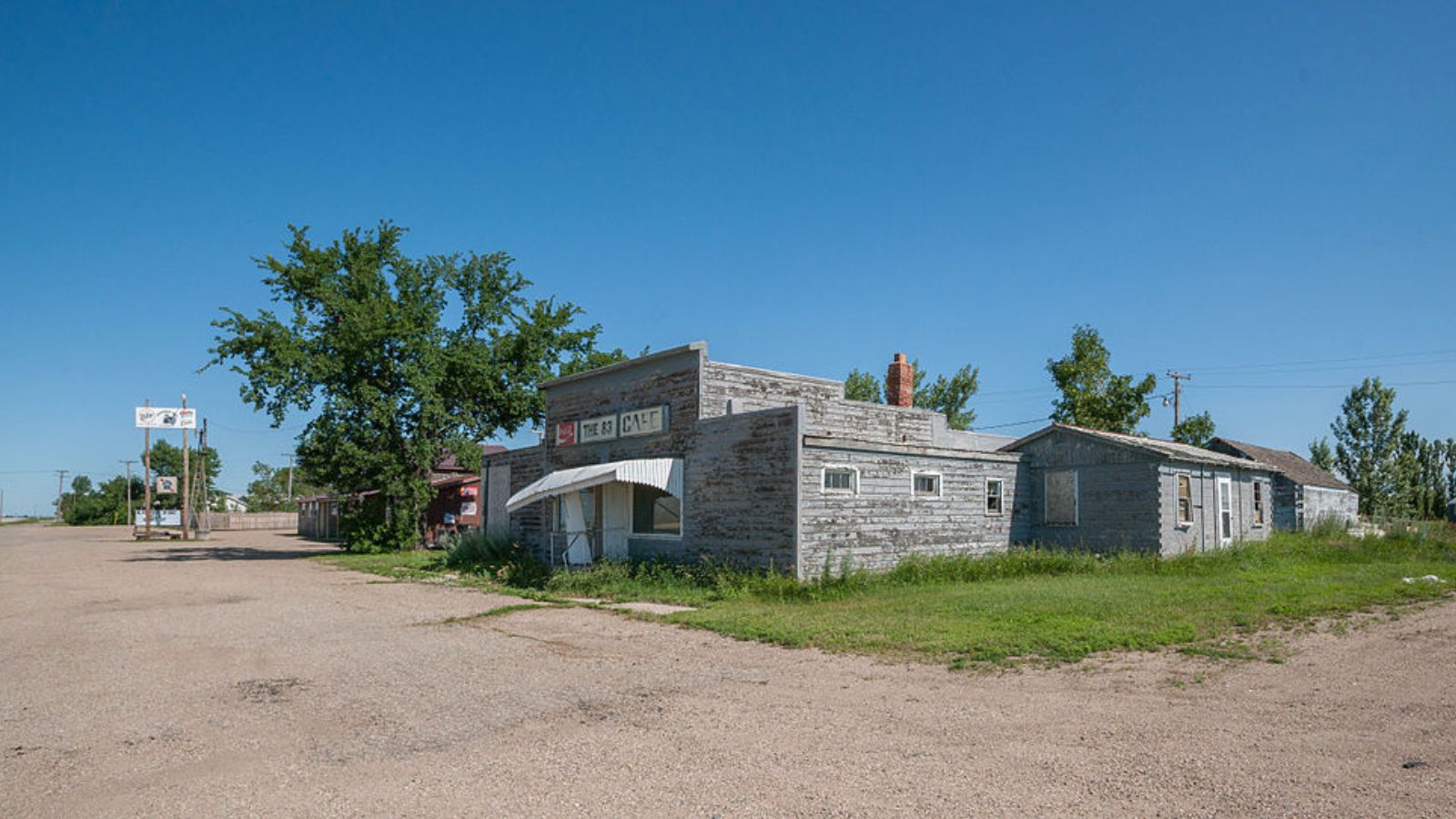
Why Are People Willing to Pay So Much to Live Here? What’s Special About It?
Coleharbor commands premium prices due to its spectacular location on Lake Sakakawea, North Dakota’s largest lake and a premier recreational destination. Residents enjoy waterfront living, boating, fishing, and water sports that are rare in this landlocked state. The community offers both permanent homes and vacation properties for those seeking lake lifestyle amenities.
Limited lakefront property creates natural scarcity that drives values higher than typical North Dakota real estate. The area attracts buyers from across the region who are willing to pay premium prices for water access and recreational opportunities unavailable elsewhere in the state.
How Coleharbor Rose to Prominence
Coleharbor’s prominence stems from the creation of Lake Sakakawea in the 1950s when the Garrison Dam was completed on the Missouri River. This massive engineering project created North Dakota’s largest lake and transformed the area from rangeland into a premier recreational destination. The town developed as a service center for lake activities and tourism.
Over decades, Coleharbor evolved from a small agricultural community into a lakefront destination attracting residents and visitors from across the region. The community has carefully balanced development with environmental preservation, maintaining the natural beauty that makes Lake Sakakawea special while providing quality housing and services.
3 Interesting Tidbits
1. Lake Sakakawea – The town sits on North Dakota’s largest lake, which covers 368,000 acres and offers some of the best fishing and boating in the Upper Midwest.
2. Dam Heritage – Coleharbor’s development is directly tied to the Garrison Dam project, one of the largest earthen dams in the world and a major feat of 1950s engineering.
3. Tourism Economy – The community benefits from year-round tourism, with summer bringing boaters and anglers while winter attracts ice fishing enthusiasts and snowmobilers.
17. Mandan – 28% Home Price Increase Since 2016

- 2010: N/A
- 2011: N/A
- 2012: N/A
- 2013: N/A
- 2014: N/A
- 2015: N/A
- 2016: $265,043
- 2017: $260,556
- 2018: $256,593
- 2019: $256,993
- 2020: $259,768
- 2021: $280,111
- 2022: $305,408
- 2023: $315,464
- 2024: $324,261
- 2025: $340,113
Mandan has achieved steady growth of 28% since 2016, climbing from around $265,000 to over $340,000. After some volatility in the late 2010s, the market has shown consistent appreciation since 2020. This upward trend reflects Mandan’s strength as Bismarck’s sister city and its role in the state capital region’s continued economic growth.
Why Mandan?
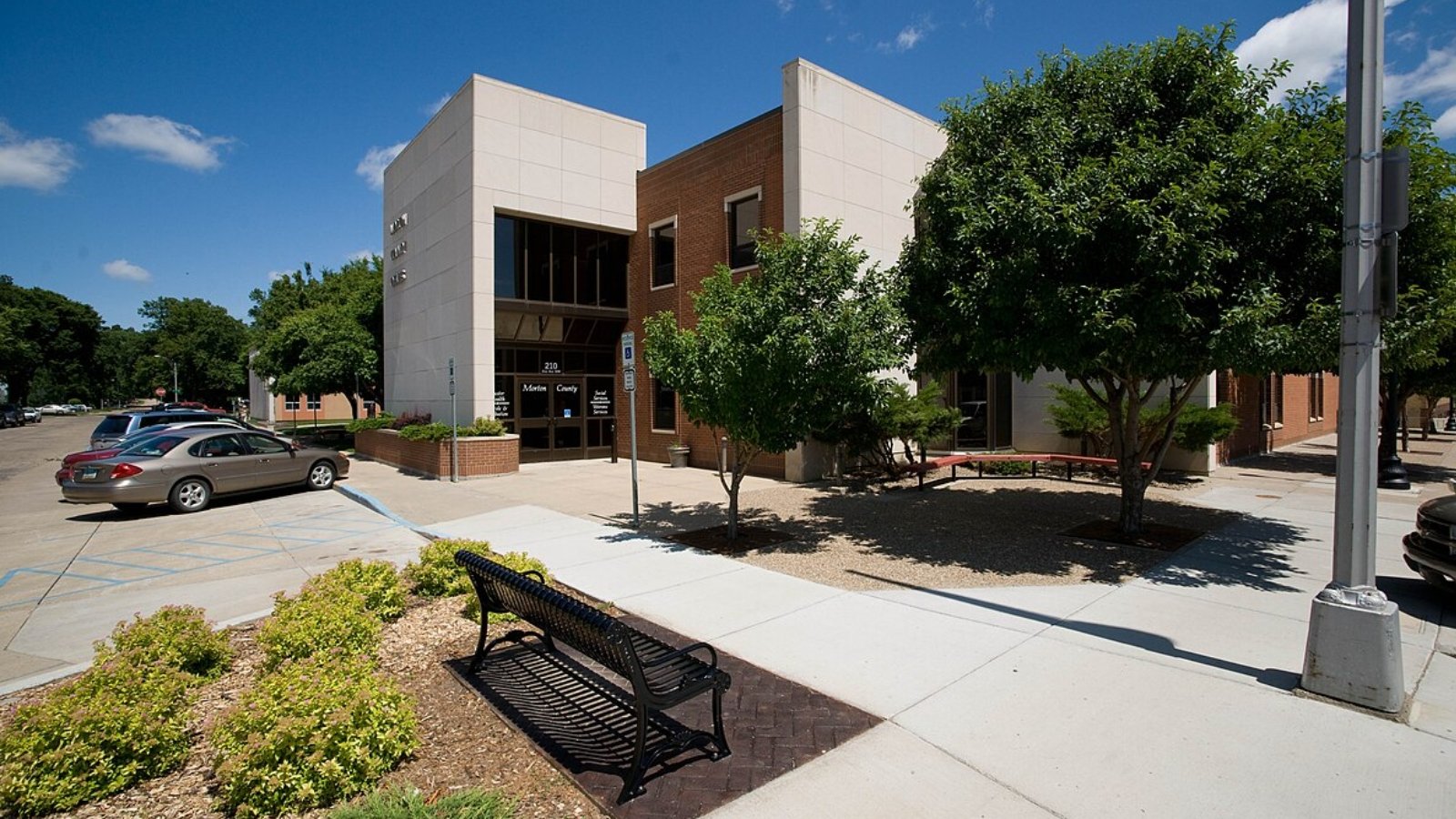
Why Are People Willing to Pay So Much to Live Here? What’s Special About It?
Mandan offers residents the benefits of living in the state capital region while maintaining a distinct community identity across the Missouri River from Bismarck. The city provides excellent schools, recreational facilities, and family-friendly neighborhoods with more space and often lower costs than central Bismarck. Commuters appreciate easy access to state government jobs and regional employers.
The community has invested in parks, recreational facilities, and quality-of-life improvements that make it attractive to families and professionals. Mandan’s riverside location and historic downtown create a unique character that sets it apart from typical suburban developments.
How Mandan Rose to Prominence
Founded in 1879 and incorporated in 1881, Mandan began as a railroad town when the Northern Pacific Railway established major facilities there. The city was named after the Mandan Native American tribe and quickly became an important transportation hub. Early growth was driven by railroad operations, with Mandan serving as a division point and maintenance center.
The city’s relationship with Bismarck developed as both communities grew, with Mandan maintaining its distinct identity while benefiting from capital city proximity. Modern Mandan has diversified beyond its railroad origins to include state government workers, energy sector employees, and regional businesses, creating a stable economic base that supports property values.
3 Interesting Tidbits
1. Railroad Legacy – Mandan was once home to massive railroad shops and facilities, with the Northern Pacific Railway being the largest employer for decades.
2. Native Heritage – The city honors the Mandan tribe through various cultural sites and maintains connections to the area’s rich Native American history.
3. River City – Mandan’s location on the Missouri River provides recreational opportunities and scenic beauty while connecting it historically to river transportation and trade.
16. Arnegard – 3% Home Price Increase Since 2024

- 2010: N/A
- 2011: N/A
- 2012: N/A
- 2013: N/A
- 2014: N/A
- 2015: N/A
- 2016: N/A
- 2017: N/A
- 2018: N/A
- 2019: N/A
- 2020: N/A
- 2021: N/A
- 2022: N/A
- 2023: N/A
- 2024: $334,725
- 2025: $346,026
Arnegard shows modest recent growth with a 3% increase since 2024, rising from around $335,000 to $346,000. With limited historical data available, this small community appears to have established itself at premium price levels. The current appreciation suggests continued demand for housing in western North Dakota’s energy-producing region.
Why Arnegard?

Why Are People Willing to Pay So Much to Live Here? What’s Special About It?
Arnegard attracts residents seeking small-town living in the heart of North Dakota’s oil country, offering access to high-paying energy jobs while maintaining rural community benefits. The town provides modern housing options, low crime rates, and the close-knit relationships that define small prairie communities. Energy sector workers appreciate the combination of career opportunities and authentic small-town lifestyle.
Limited housing inventory in desirable oil region communities creates competition among buyers, supporting premium price levels. The area’s economic prosperity from energy development allows residents to afford higher housing costs while enjoying the benefits of small-community living.
How Arnegard Rose to Prominence
Arnegard began as a small agricultural community in McKenzie County, serving local farming and ranching operations in western North Dakota. The town remained relatively unknown for most of its history, with a small population supported by agriculture and modest regional commerce. The Bakken oil boom dramatically changed the area’s prospects starting in the 2000s.
Oil development brought new residents, businesses, and economic opportunities that transformed Arnegard from a quiet farming town into part of North Dakota’s energy corridor. The community has adapted to accommodate growth while maintaining its small-town character and agricultural connections.
3 Interesting Tidbits
1. Oil Boom Impact – Arnegard’s transformation reflects the broader changes oil development brought to western North Dakota communities over the past two decades.
2. Agricultural Roots – Despite energy sector growth, the town maintains strong connections to farming and ranching that have supported the area for over a century.
3. Regional Hub – The community serves surrounding rural areas with services and amenities, making it a focal point for the broader McKenzie County region.
15. Epping – 12% Home Price Increase Since 2021

- 2010: N/A
- 2011: N/A
- 2012: N/A
- 2013: N/A
- 2014: N/A
- 2015: N/A
- 2016: N/A
- 2017: N/A
- 2018: N/A
- 2019: N/A
- 2020: N/A
- 2021: $312,332
- 2022: $336,270
- 2023: $334,724
- 2024: $336,182
- 2025: $351,119
Epping has shown steady growth of 12% since 2021, climbing from around $312,000 to over $351,000. The town experienced quick appreciation in 2022 followed by relative stability before another jump in 2025. This pattern suggests a maturing market where values have found support at higher levels, reflecting the community’s appeal in northwestern North Dakota.
Why Epping?

Why Are People Willing to Pay So Much to Live Here? What’s Special About It?
Epping offers residents small-town living in the heart of North Dakota’s energy region, providing access to oil industry employment while maintaining rural community benefits. The town features newer housing developments, excellent schools, and the safety and community connections that characterize successful small North Dakota towns. Energy workers appreciate living costs that remain reasonable despite higher home values.
The community’s location near major oil development areas creates economic opportunities that support higher property values. Epping provides the stability and quality of life that energy sector families seek while offering investment potential for those connected to the region’s continued development.
How Epping Rose to Prominence
Epping was established in the early 1900s as a small farming and ranching community in Williams County. The town developed around agricultural services and remained a quiet rural community for most of its history. The discovery and development of Bakken oil reserves brought dramatic changes starting in the 2000s, transforming the local economy and attracting new residents.
Oil development created new employment opportunities and brought infrastructure improvements that enhanced the community’s appeal. Epping has successfully managed growth while preserving its small-town character, attracting both energy workers and families seeking quality small-community living in an economically vibrant region.
3 Interesting Tidbits
1. Energy Economy – Epping sits in Williams County, one of North Dakota’s top oil-producing areas, providing residents with access to high-paying energy sector jobs.
2. Rural Character – Despite economic growth, the town has maintained its agricultural heritage and small-community atmosphere that residents value highly.
3. Infrastructure Investment – Oil development has brought significant infrastructure improvements including better roads, utilities, and telecommunications that benefit all residents.
14. West Fargo – 78% Home Price Increase Since 2010

- 2010: $198,671
- 2011: $196,431
- 2012: $188,743
- 2013: $198,415
- 2014: $210,639
- 2015: $231,188
- 2016: $251,348
- 2017: $266,281
- 2018: $264,029
- 2019: $272,606
- 2020: $276,831
- 2021: $302,145
- 2022: $326,588
- 2023: $338,438
- 2024: $345,923
- 2025: $353,390
West Fargo has delivered impressive growth of 78% since 2010, climbing from under $199,000 to over $353,000. The city shows consistent appreciation with only minor fluctuations, demonstrating the strength of Fargo-area suburban markets. Recent years have brought continued gains, with 2025 values reaching new highs as demand remains strong for quality suburban housing.
Why West Fargo?

Why Are People Willing to Pay So Much to Live Here? What’s Special About It?
West Fargo combines suburban convenience with excellent schools, family-friendly neighborhoods, and abundant recreational facilities that make it one of North Dakota’s most desirable places to live. The city offers newer housing developments, modern shopping centers, and quality services while maintaining easy access to Fargo employment and cultural opportunities. Families are drawn to the top-rated school district and safe, well-planned communities.
The city has managed rapid growth while maintaining quality development standards and preserving green spaces. West Fargo provides the suburban lifestyle many families seek, with larger lots, newer homes, and planned communities that offer amenities like parks, trails, and recreational facilities.
How West Fargo Rose to Prominence
West Fargo incorporated in 1955 as suburban development spread west from Fargo proper. The city was planned as a residential community to accommodate families seeking newer housing and more space than downtown Fargo could provide. Early development focused on quality subdivisions and family-oriented amenities that established West Fargo’s reputation as a desirable place to raise children.
Rapid growth accelerated in recent decades as the Fargo-Moorhead metropolitan area expanded. West Fargo attracted major retailers, services, and employers while maintaining its suburban character. The city has become a model for planned suburban development in North Dakota, balancing growth with quality of life considerations.
3 Interesting Tidbits
1. School Excellence – West Fargo Public Schools consistently rank among the state’s best, driving residential demand from families prioritizing education quality.
2. Retail Hub – The city hosts major shopping centers and big-box retailers that serve the entire Fargo-Moorhead region, creating jobs and attracting businesses.
3. Planned Growth – West Fargo is known for well-planned subdivisions and developments that maintain property values through quality design and community amenities.
13. Walcott – 2% Home Price Increase Since 2024

- 2010: N/A
- 2011: N/A
- 2012: N/A
- 2013: N/A
- 2014: N/A
- 2015: N/A
- 2016: N/A
- 2017: N/A
- 2018: N/A
- 2019: N/A
- 2020: N/A
- 2021: N/A
- 2022: N/A
- 2023: N/A
- 2024: $346,915
- 2025: $353,425
Walcott shows modest recent appreciation with a 2% increase since 2024, rising from around $347,000 to over $353,000. With limited historical data available, this small community has established itself at premium price levels. The steady growth suggests stable demand for rural housing in well-located communities with good access to regional employment centers.
Why Walcott?
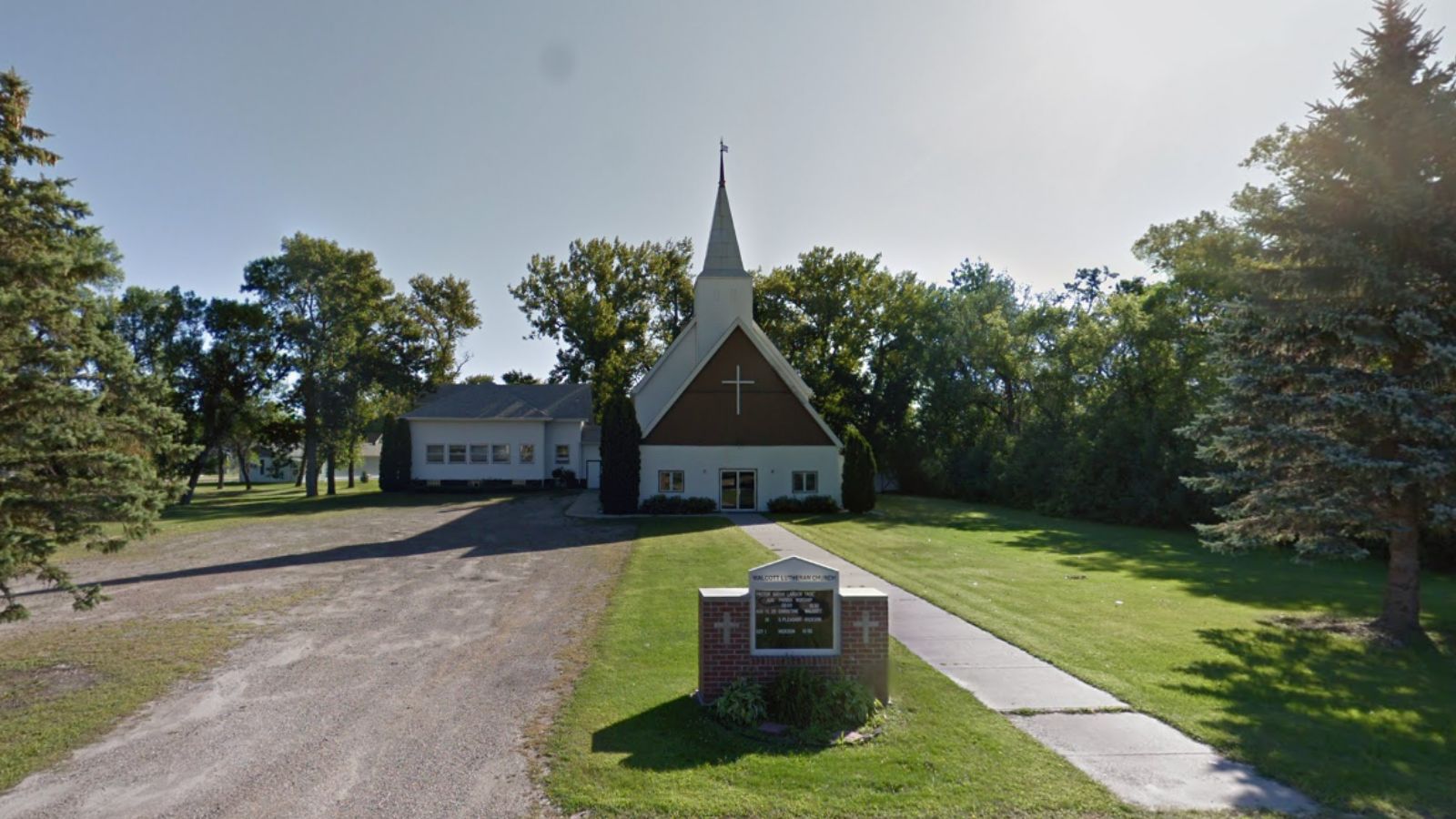
Why Are People Willing to Pay So Much to Live Here? What’s Special About It?
Walcott attracts buyers seeking rural living with modern conveniences in a well-established farming community. The town offers larger properties, quality construction, and the peaceful environment that appeals to those escaping urban congestion. Residents value the strong agricultural heritage and community connections that create lasting neighborhood bonds.
The area’s location provides reasonable access to regional employment while offering the space and privacy that many buyers prioritize. Limited housing inventory in desirable rural locations supports premium pricing for quality properties in well-maintained communities.
How Walcott Rose to Prominence
Walcott developed as a small agricultural community in the early 1900s, serving local farming operations in Richland County. The town grew around grain elevators and agricultural services that supported area farmers throughout the agricultural seasons. German and Norwegian immigrants were among the early settlers who established farming traditions that continue today.
The community maintained steady growth through agricultural prosperity while adapting to modern farming techniques and changing economic conditions. Walcott has preserved its rural character while attracting new residents who appreciate both agricultural heritage and contemporary amenities in a peaceful setting.
3 Interesting Tidbits
1. Agricultural Excellence – Walcott sits in some of North Dakota’s most productive farmland, with agriculture remaining central to the local economy and community identity.
2. Rural Lifestyle – The town offers authentic country living with larger properties and agricultural connections that appeal to buyers seeking escape from urban environments.
3. Community Stability – Walcott has maintained remarkable stability in population and character, indicating strong resident satisfaction and successful rural community management.
12. Thompson – 49% Home Price Increase Since 2012

- 2010: N/A
- 2011: N/A
- 2012: $239,433
- 2013: $253,918
- 2014: $266,292
- 2015: $286,536
- 2016: $290,436
- 2017: $286,602
- 2018: $299,646
- 2019: $300,526
- 2020: $325,911
- 2021: $352,233
- 2022: $365,376
- 2023: $358,294
- 2024: $357,343
- 2025: $356,149
Thompson has achieved solid growth of 49% since 2012, rising from around $239,000 to over $356,000. The community peaked in 2022 at nearly $365,000 before moderating slightly to current levels. This growth pattern reflects Thompson’s appeal as part of the Grand Forks metropolitan area while maintaining its small-town character and agricultural connections.
Why Thompson?
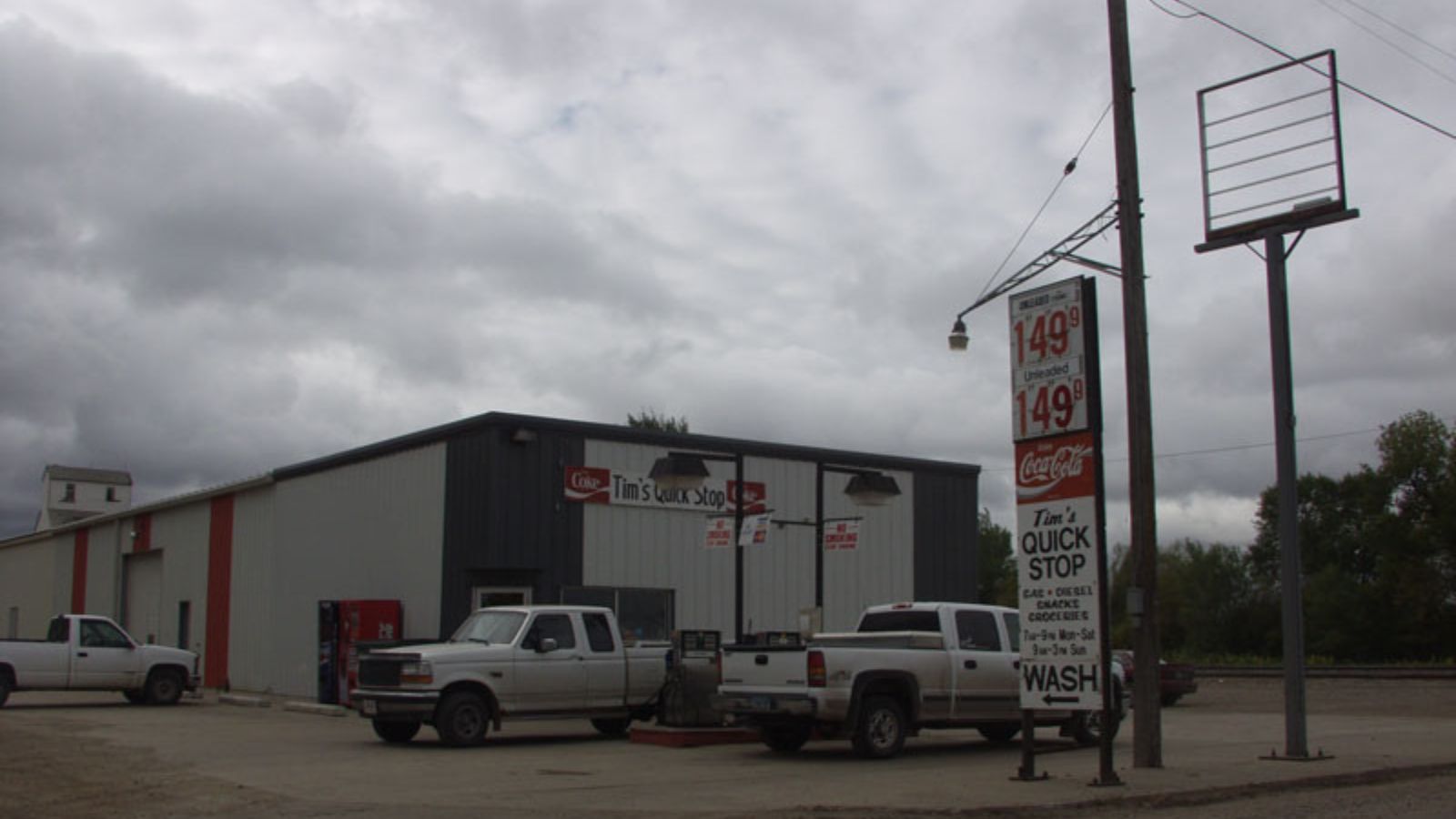
Why Are People Willing to Pay So Much to Live Here? What’s Special About It?
Thompson attracts residents seeking small-town living within the Grand Forks metropolitan area, offering family-friendly neighborhoods and excellent schools. The community provides larger lots, newer housing options, and the safety and community connections that young families prioritize. Commuters appreciate reasonable access to Grand Forks employment while enjoying rural benefits like lower traffic and closer neighbor relationships.
The town has maintained steady growth and development while preserving its agricultural heritage and small-community character. Property values reflect the premium buyers place on quality education, safe neighborhoods, and the lifestyle advantages of small-town living near a larger city.
How Thompson Rose to Prominence
Thompson was established in the late 1800s as a railroad town serving agricultural communities in Grand Forks County. The town grew around grain elevators and agricultural services that supported local farmers, establishing itself as a regional service center. Early settlers were primarily Norwegian and German immigrants who brought farming expertise to the fertile Red River Valley.
As Grand Forks expanded, Thompson evolved into a bedroom community while maintaining its agricultural roots. The town has successfully balanced growth with preservation of its rural character, attracting families who work in Grand Forks but prefer small-town living for their children and lifestyle preferences.
3 Interesting Tidbits
1. University Connection – Many Thompson residents work at the University of North Dakota in Grand Forks, creating a stable employment base that supports local property values.
2. Agricultural Heritage – The town maintains strong ties to farming through family operations and agricultural businesses that have supported the community for generations.
3. Valley Living – Thompson’s location in the Red River Valley provides access to some of the world’s most fertile farmland and spectacular prairie landscapes.
11. Williston – 79% Home Price Increase Since 2010

- 2010: $203,016
- 2011: $208,722
- 2012: $240,527
- 2013: $292,236
- 2014: $317,420
- 2015: $354,483
- 2016: $317,265
- 2017: $294,577
- 2018: $276,047
- 2019: $295,649
- 2020: $314,325
- 2021: $330,487
- 2022: $334,124
- 2023: $332,418
- 2024: $340,057
- 2025: $363,004
Williston demonstrates dramatic growth of 79% since 2010, climbing from around $203,000 to over $363,000. The city experienced explosive growth during the oil boom (2012-2015) followed by significant declines through 2018, then steady recovery to new highs. This volatile pattern perfectly captures Williston’s role as the epicenter of North Dakota’s oil boom and subsequent market stabilization.
Why Williston?
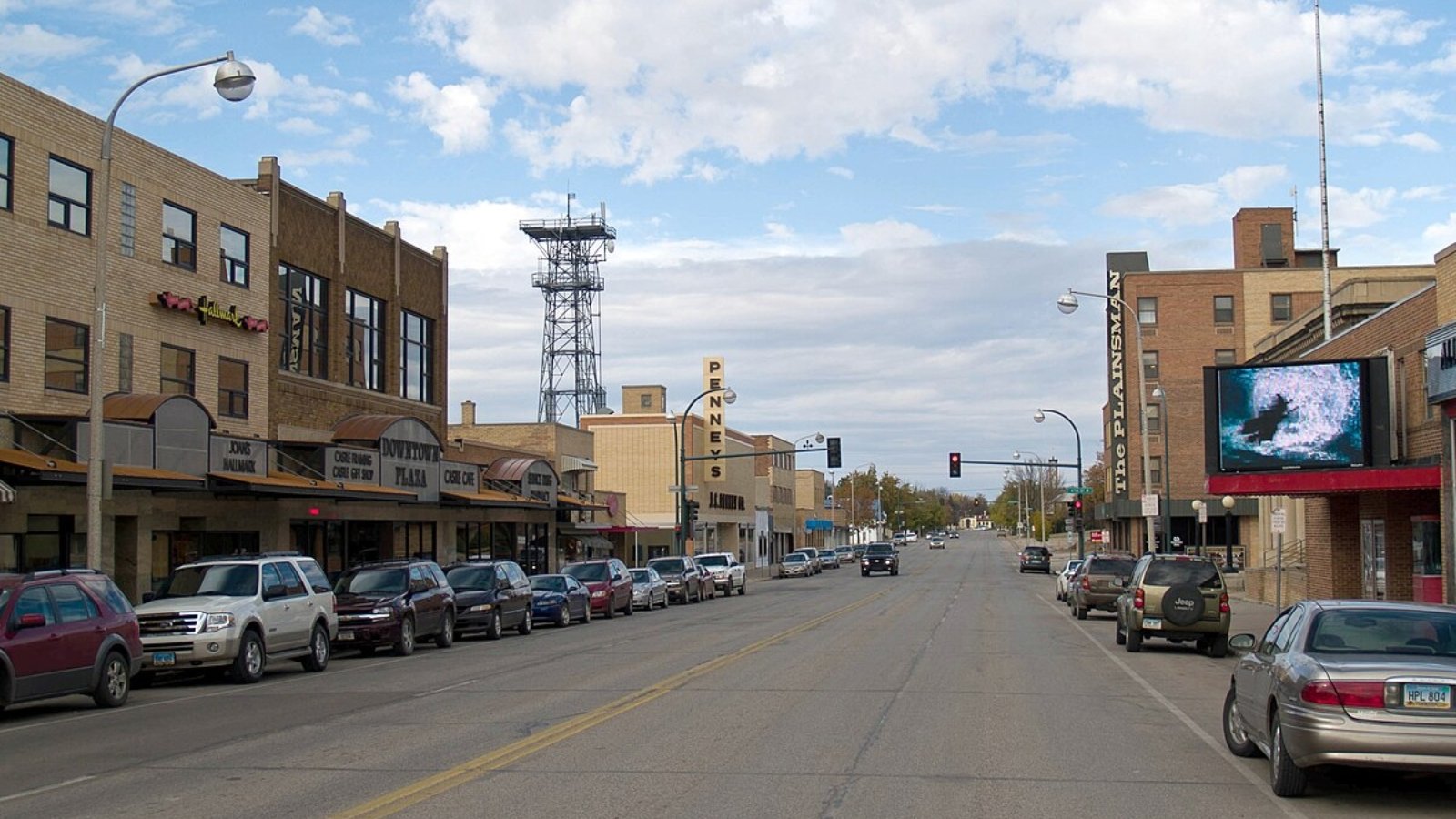
Why Are People Willing to Pay So Much to Live Here? What’s Special About It?
Williston stands as the undisputed capital of North Dakota’s oil boom, offering residents access to some of the highest-paying jobs in the state while providing urban amenities and services. The city has invested heavily in infrastructure, recreation facilities, and quality-of-life improvements during the oil boom years. Energy workers and their families appreciate the combination of excellent earning potential and small-city living with big-city conveniences.
The community has evolved far beyond its oil boomtown image, developing cultural attractions, educational facilities, and recreational amenities that make it attractive to diverse residents. Williston’s economic base, while energy-focused, has diversified enough to provide stability even during industry fluctuations.
How Williston Rose to Prominence
Founded in 1887 as a Great Northern Railway town, Williston was named after Daniel Willis James, a railroad financier. The city served as an agricultural center and railroad hub for northwestern North Dakota throughout the early and mid-20th century. Agriculture and modest regional commerce supported steady but unremarkable growth for decades.
The Bakken oil boom beginning in the 2000s completely transformed Williston from a quiet agricultural town into North Dakota’s oil capital. The city experienced massive population growth, infrastructure investment, and economic development that made it a national symbol of American energy production. Despite boom-bust cycles, Williston has established itself as a permanent energy sector hub.
3 Interesting Tidbits
1. Oil Capital – Williston is widely recognized as the center of North Dakota’s oil industry, with major energy companies maintaining significant operations in the area.
2. Boom Transformation – The city’s population more than tripled during the oil boom, requiring massive infrastructure expansion and urban planning efforts.
3. Recreation Investment – Oil boom revenues funded major recreational facilities including the Williston Recreation Center, which features amenities typically found in much larger cities.
10. Bismarck – 110% Home Price Increase Since 2010

- 2010: $173,986
- 2011: $178,040
- 2012: $195,125
- 2013: $229,874
- 2014: $253,224
- 2015: $278,131
- 2016: $274,874
- 2017: $272,373
- 2018: $273,845
- 2019: $276,653
- 2020: $281,605
- 2021: $303,434
- 2022: $329,966
- 2023: $340,941
- 2024: $347,045
- 2025: $364,749
Bismarck has achieved remarkable growth of 110% since 2010, more than doubling from around $174,000 to nearly $365,000. The state capital showed consistent appreciation through most periods, with particularly strong gains during 2012-2015 and again from 2020-2025. This sustained growth reflects Bismarck’s stability as the seat of state government and a regional economic center.
Why Bismarck?
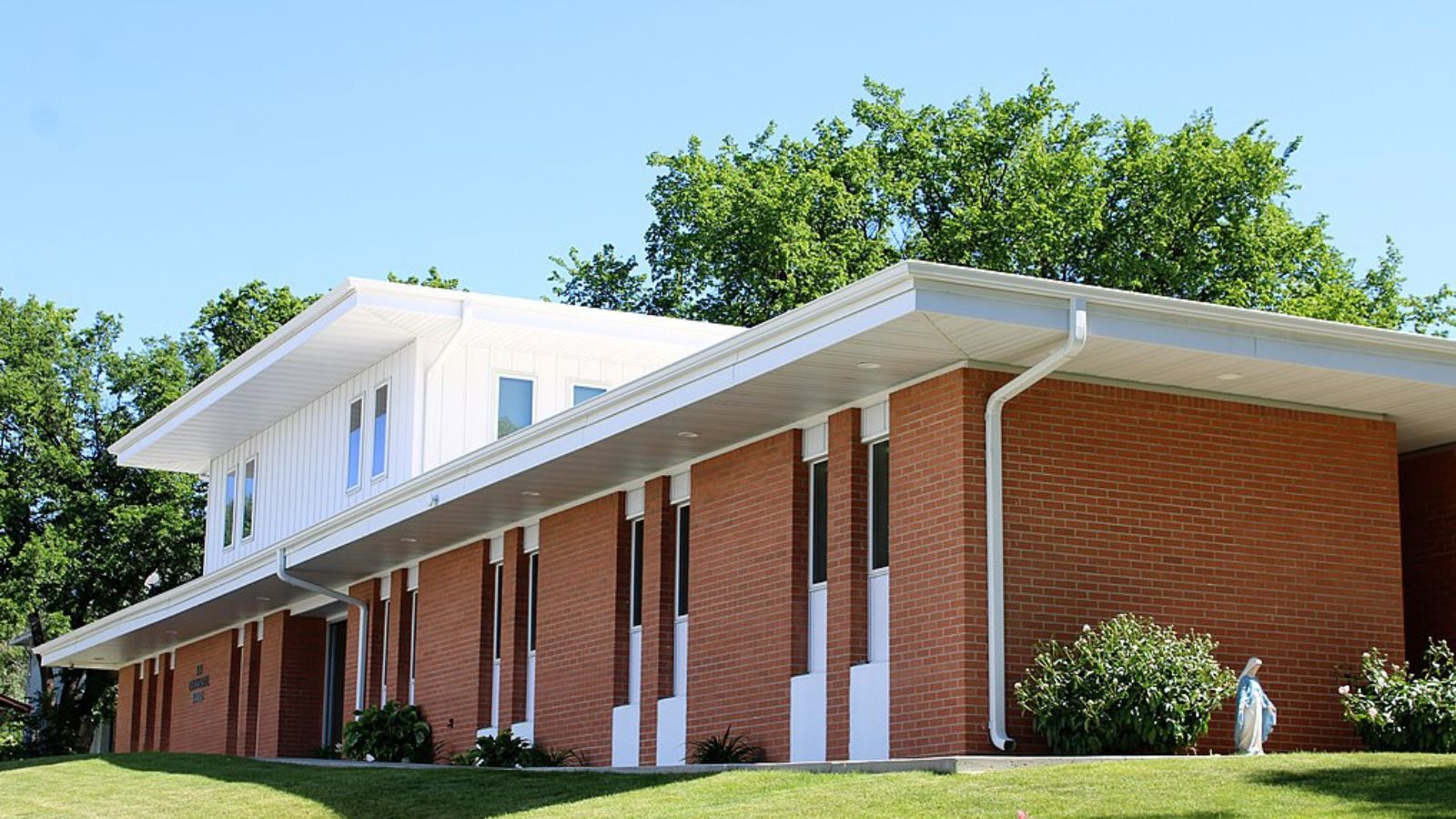
Why Are People Willing to Pay So Much to Live Here? What’s Special About It?
Bismarck offers residents the stability and opportunities of living in North Dakota’s capital city, with state government providing secure employment and economic anchoring. The city features excellent healthcare facilities, quality schools, and cultural amenities including museums, theaters, and recreational facilities. Government workers, healthcare professionals, and business leaders appreciate the combination of career opportunities and affordable living compared to other state capitals.
The community has maintained steady growth and investment in infrastructure, parks, and quality-of-life improvements that make it attractive to families and professionals. Bismarck’s role as a regional center provides services and amenities unavailable in smaller communities while maintaining a manageable size and cost of living.
How Bismarck Rose to Prominence
Established in 1872 and named after German Chancellor Otto von Bismarck, the city became North Dakota’s capital in 1889 when the territory achieved statehood. Early growth was driven by its selection as the territorial and later state capital, bringing government offices, workers, and associated businesses. The Northern Pacific Railway also established major facilities there, supporting commercial development.
Throughout the 20th century, Bismarck grew steadily as state government expanded and regional businesses located there to serve central North Dakota. The city has successfully diversified its economy while maintaining its government anchor, developing healthcare, education, and energy sectors that provide economic stability and growth opportunities.
3 Interesting Tidbits
1. Capital Advantage – As North Dakota’s capital, Bismarck benefits from stable government employment and the business activity that accompanies state operations and legislative sessions.
2. Healthcare Hub – The city hosts major medical facilities including Sanford Health and CHI St. Alexius, making it a regional healthcare center serving central and western North Dakota.
3. Cultural Center – Bismarck offers cultural attractions like the North Dakota Heritage Center and Missouri River activities that enhance quality of life and attract residents.
9. Menoken – 15% Home Price Increase Since 2022

- 2010: N/A
- 2011: N/A
- 2012: N/A
- 2013: N/A
- 2014: N/A
- 2015: N/A
- 2016: N/A
- 2017: N/A
- 2018: N/A
- 2019: N/A
- 2020: N/A
- 2021: N/A
- 2022: $320,639
- 2023: $328,482
- 2024: $348,123
- 2025: $369,391
Menoken has experienced solid growth of 15% since 2022, climbing from around $321,000 to over $369,000. The community shows consistent year-over-year appreciation with particularly strong gains in 2024 and 2025. This steady upward trend suggests growing recognition of Menoken’s appeal as a rural community near the state capital region.
Why Menoken?
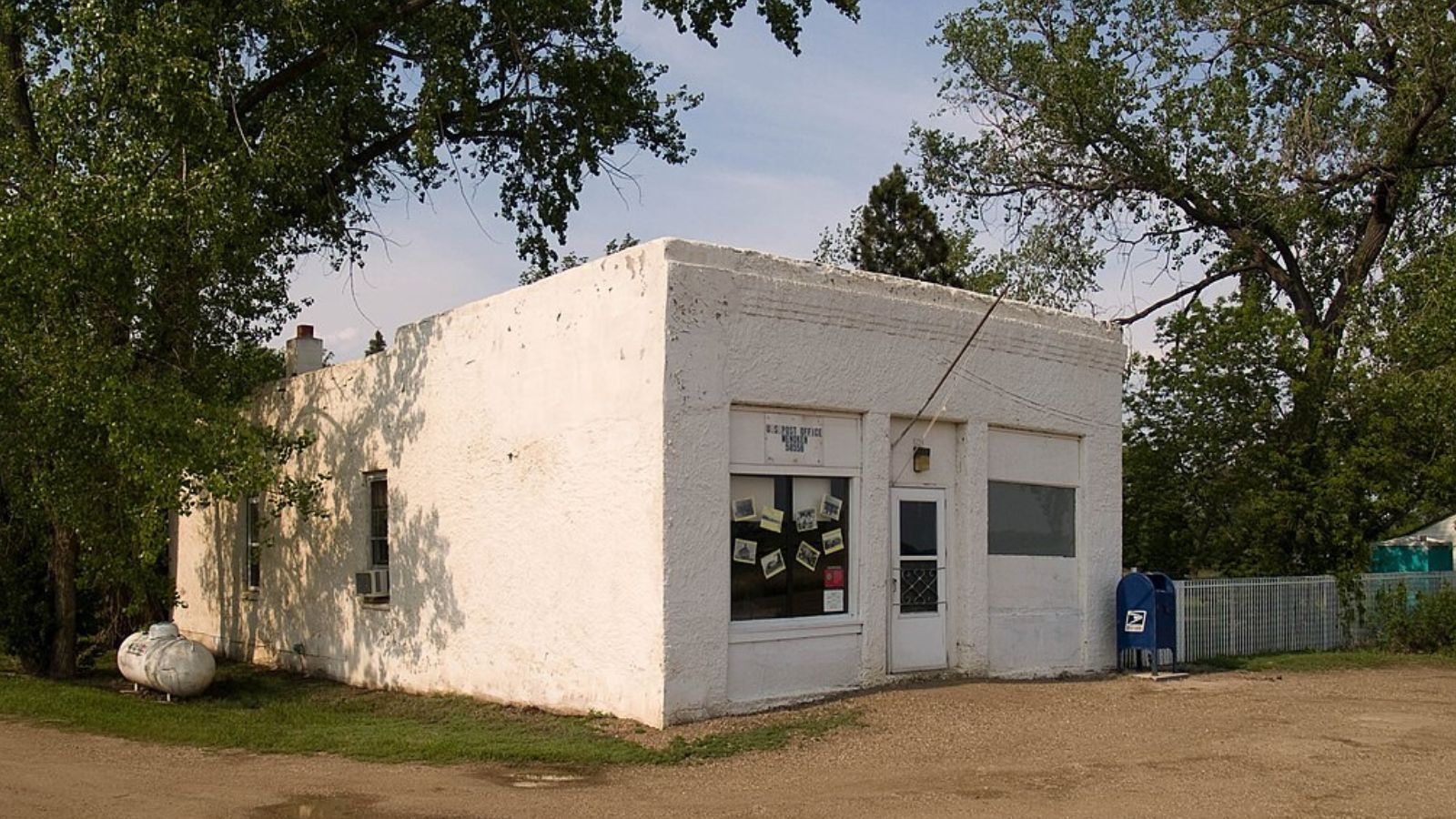
Why Are People Willing to Pay So Much to Live Here? What’s Special About It?
Menoken offers residents rural tranquility with convenient access to Bismarck employment and services, creating an ideal balance for those seeking country living without isolation. The community provides larger properties, agricultural connections, and the peaceful environment that appeals to families and professionals working in the capital region. Limited housing inventory in well-located rural areas supports premium pricing.
The town’s proximity to Bismarck allows residents to enjoy capital city career opportunities while embracing rural lifestyle benefits including space, privacy, and community connections. Property values reflect the premium buyers place on this combination of accessibility and rural character.
How Menoken Rose to Prominence
Menoken developed as a small agricultural community in Burleigh County, serving local farming operations near the state capital. The town grew around agricultural services and grain operations that supported area farmers. Its location near Bismarck provided advantages as the capital city expanded, but Menoken maintained its rural agricultural character.
As Bismarck grew and sprawled outward, Menoken became increasingly attractive to those seeking rural living with capital city access. The community has preserved its agricultural heritage while developing quality housing options that appeal to government workers, professionals, and others who prefer country living but work in urban settings.
3 Interesting Tidbits
1. Capital Proximity – Menoken’s location near Bismarck provides easy access to state government jobs and services while maintaining complete rural character and agricultural connections.
2. Agricultural Heritage – Many residents maintain farming operations or connections to agriculture that have sustained the community for over a century.
3. Rural Premium – The town commands higher prices than many North Dakota communities due to its combination of rural lifestyle and metropolitan access.
8. Watford City – 24% Home Price Increase Since 2019

- 2010: N/A
- 2011: N/A
- 2012: N/A
- 2013: N/A
- 2014: N/A
- 2015: N/A
- 2016: N/A
- 2017: N/A
- 2018: N/A
- 2019: $298,323
- 2020: $312,512
- 2021: $333,632
- 2022: $349,569
- 2023: $347,385
- 2024: $351,987
- 2025: $371,005
Watford City has shown steady growth of 24% since 2019, climbing from around $298,000 to over $371,000. The community experienced consistent appreciation through 2022, followed by relative stability before another jump in 2025. This growth pattern reflects Watford City’s central role in North Dakota’s oil industry and its evolution into a regional center.
Why Watford City?

Why Are People Willing to Pay So Much to Live Here? What’s Special About It?
Watford City serves as a major hub for North Dakota’s oil industry, offering residents access to high-paying energy jobs while providing small-city amenities and services. The community has invested heavily in infrastructure, schools, and recreational facilities during the oil boom, creating quality-of-life advantages that justify premium housing costs. Energy workers and their families appreciate the combination of economic opportunity and community stability.
The city has successfully managed rapid growth while maintaining livability and community character. Modern Watford City offers shopping, dining, entertainment, and services that rival much larger cities, while retaining the safety and community connections that make small-town living appealing.
How Watford City Rose to Prominence
Founded in 1913 as a railroad town along the Great Northern Railway, Watford City was named after Watford, Ontario. The community served as an agricultural center and county seat for McKenzie County, supporting local farming and ranching operations. For decades, it remained a quiet regional center with modest growth tied to agriculture and government services.
The Bakken oil boom completely transformed Watford City starting in the 2000s, bringing massive population growth and economic development. The city became a major center for oil operations, with energy companies establishing significant facilities and services. Despite challenges managing rapid growth, Watford City has emerged as a permanent regional center with diversified economy and modern amenities.
3 Interesting Tidbits
1. Oil Headquarters – Many major oil companies have established regional headquarters or significant operations in Watford City, making it a key energy industry center.
2. Growth Management – The city has invested millions in infrastructure and services to accommodate rapid population growth while maintaining quality of life for residents.
3. Economic Diversification – While oil-dependent, Watford City has worked to develop other economic sectors including agriculture, healthcare, and regional services to create long-term stability.
7. Harwood – 59% Home Price Increase Since 2010

- 2010: $242,992
- 2011: $241,074
- 2012: $238,504
- 2013: $226,224
- 2014: $240,447
- 2015: $262,569
- 2016: $281,178
- 2017: $282,909
- 2018: $286,444
- 2019: $313,473
- 2020: $320,301
- 2021: $352,023
- 2022: $370,751
- 2023: $358,090
- 2024: $368,219
- 2025: $387,503
Harwood has achieved strong growth of 59% since 2010, rising from around $243,000 to nearly $388,000. The community showed steady appreciation with some early volatility, then accelerated growth from 2019-2022 when values jumped over $57,000. Despite a small dip in 2023, the market has continued climbing to new highs, reflecting strong demand for this Fargo-area location.
Why Harwood?

Why Are People Willing to Pay So Much to Live Here? What’s Special About It?
Harwood attracts residents seeking upscale rural living within easy reach of Fargo-Moorhead employment and amenities. The community offers larger lots, custom-built homes, and the privacy that appeals to professionals and executives seeking escape from urban density. Families value the excellent schools, safe neighborhoods, and strong community connections that define successful small towns.
The area provides the perfect balance between rural lifestyle benefits and metropolitan access, with many residents working in Fargo while enjoying country living. Property values reflect the premium buyers place on this combination of privacy, space, and convenience in one of North Dakota’s most desirable rural communities.
How Harwood Rose to Prominence
Harwood was established in the 1870s as a farming community in Cass County, growing around agricultural operations in the fertile Red River Valley. The town was named after a railroad official and developed as a grain shipping point along railway lines. Norwegian and German immigrants were among the early settlers who established the farming traditions that continue to influence the community.
As the Fargo metropolitan area expanded, Harwood evolved into a premium bedroom community while preserving its agricultural heritage. The town has attracted successful professionals and business owners seeking rural lifestyle benefits with urban career access, establishing itself as one of the most desirable communities in the Fargo region.
3 Interesting Tidbits
1. Executive Community – Harwood has become home to many Fargo-area executives and professionals who appreciate the rural setting and larger properties the town offers.
2. Agricultural Roots – Despite suburban growth, many residents maintain connections to farming through family operations or agricultural businesses in the area.
3. Premium Location – The town’s position in the Red River Valley provides both fertile farmland and easy access to the Fargo-Moorhead metropolitan area’s employment and services.
6. Horace – 81% Home Price Increase Since 2010

- 2010: $219,238
- 2011: $224,041
- 2012: $215,759
- 2013: $238,182
- 2014: $249,194
- 2015: $276,968
- 2016: $299,442
- 2017: $310,493
- 2018: $311,100
- 2019: $335,485
- 2020: $348,116
- 2021: $382,483
- 2022: $426,505
- 2023: $404,146
- 2024: $389,500
- 2025: $396,286
Horace demonstrates exceptional growth of 81% since 2010, climbing from around $219,000 to nearly $396,000. The city peaked in 2022 at over $426,000 before moderating to current levels. This impressive appreciation reflects Horace’s transformation into one of North Dakota’s fastest-growing communities and most desirable suburban locations.
Why Horace?
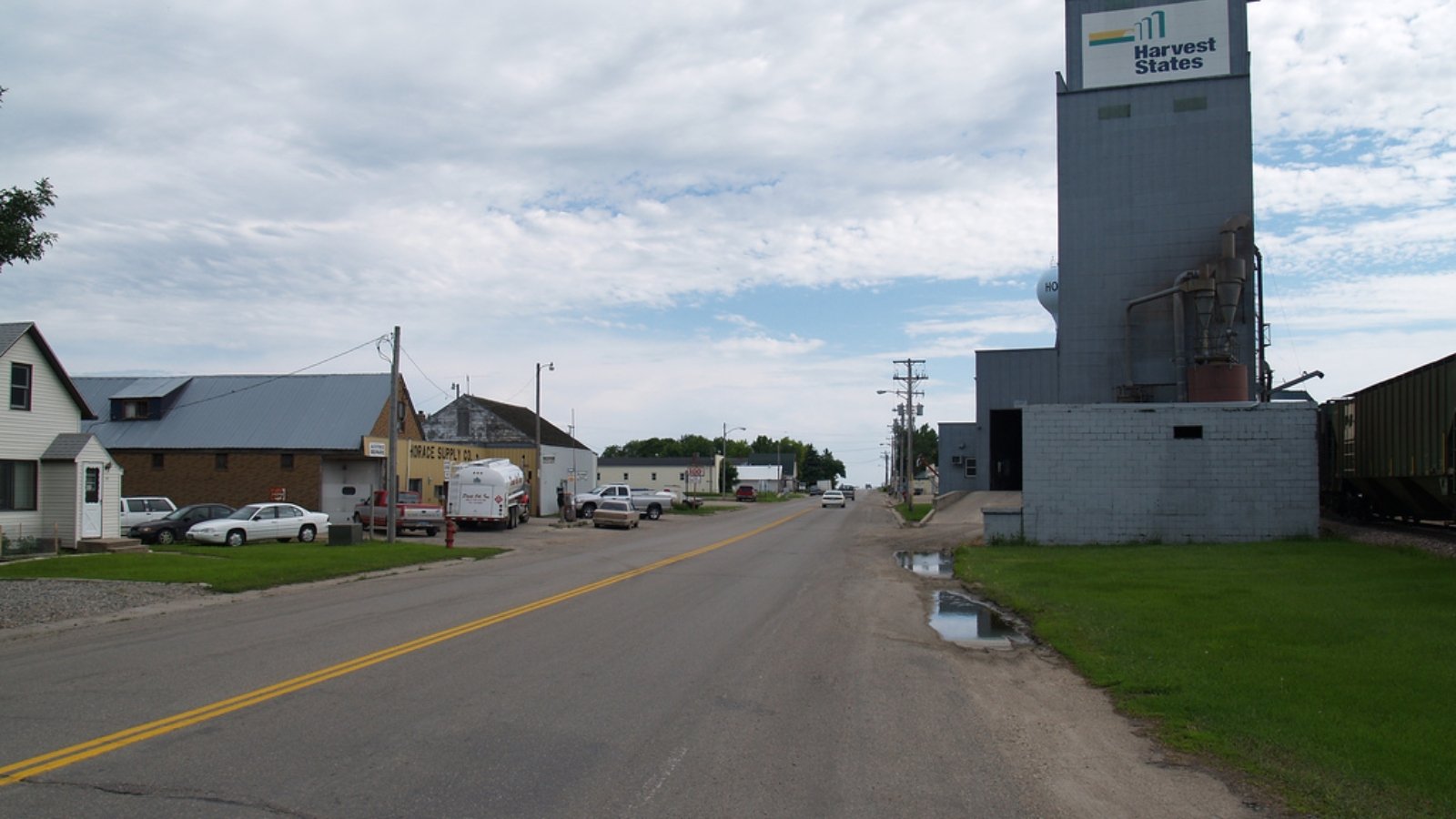
Why Are People Willing to Pay So Much to Live Here? What’s Special About It?
Horace has earned recognition as one of North Dakota’s premier family communities, offering excellent schools, safe neighborhoods, and carefully planned development that maintains quality standards. The city provides suburban amenities including parks, recreational facilities, and modern housing while keeping small-town character and community connections. Families are drawn to the top-rated school district and abundance of youth programs and activities.
The community’s strategic location south of Fargo provides easy commuting access while offering newer developments, larger lots, and planned neighborhoods that appeal to growing families. Horace has managed rapid growth while preserving quality of life through thoughtful planning and community investment.
How Horace Rose to Prominence
Founded in 1882 and named after newspaper editor Horace Greeley, the community began as a small farming town serving agricultural operations in Cass County. A post office operated since 1875, and the town grew modestly around railroad connections and farming services. For most of its history, Horace remained a quiet agricultural community with limited growth.
Modern transformation began as the Fargo metropolitan area expanded southward, with Horace positioned perfectly to become a premium suburban community. The city invested in quality schools, parks, and planned development that attracted families seeking alternatives to urban living. Rapid growth accelerated in recent decades as Horace established itself as the premier family destination in the Fargo area.
3 Interesting Tidbits
1. Mickey Mouse Avenue – Horace is reportedly the only city in America with a street named Mickey Mouse Avenue, created by a frustrated developer in the 1960s who told officials to “call it Mickey Mouse for all I care.”
2. Fastest Growing – Horace ranks among North Dakota’s fastest-growing cities, with population more than doubling in recent years as families discover its advantages.
3. Flood Protection – The Sheyenne Diversion Project protects Horace from flooding, providing security that supports property values and community development.
5. Colfax – 4% Home Price Increase Since 2024

- 2010: N/A
- 2011: N/A
- 2012: N/A
- 2013: N/A
- 2014: N/A
- 2015: N/A
- 2016: N/A
- 2017: N/A
- 2018: N/A
- 2019: N/A
- 2020: N/A
- 2021: N/A
- 2022: N/A
- 2023: N/A
- 2024: $383,500
- 2025: $399,899
Colfax shows modest recent growth with a 4% increase since 2024, rising from around $383,500 to nearly $400,000. With limited historical data available, this small community has clearly established itself at premium price levels approaching $400,000. The steady appreciation suggests strong demand for rural housing in well-positioned communities with regional access.
Why Colfax?
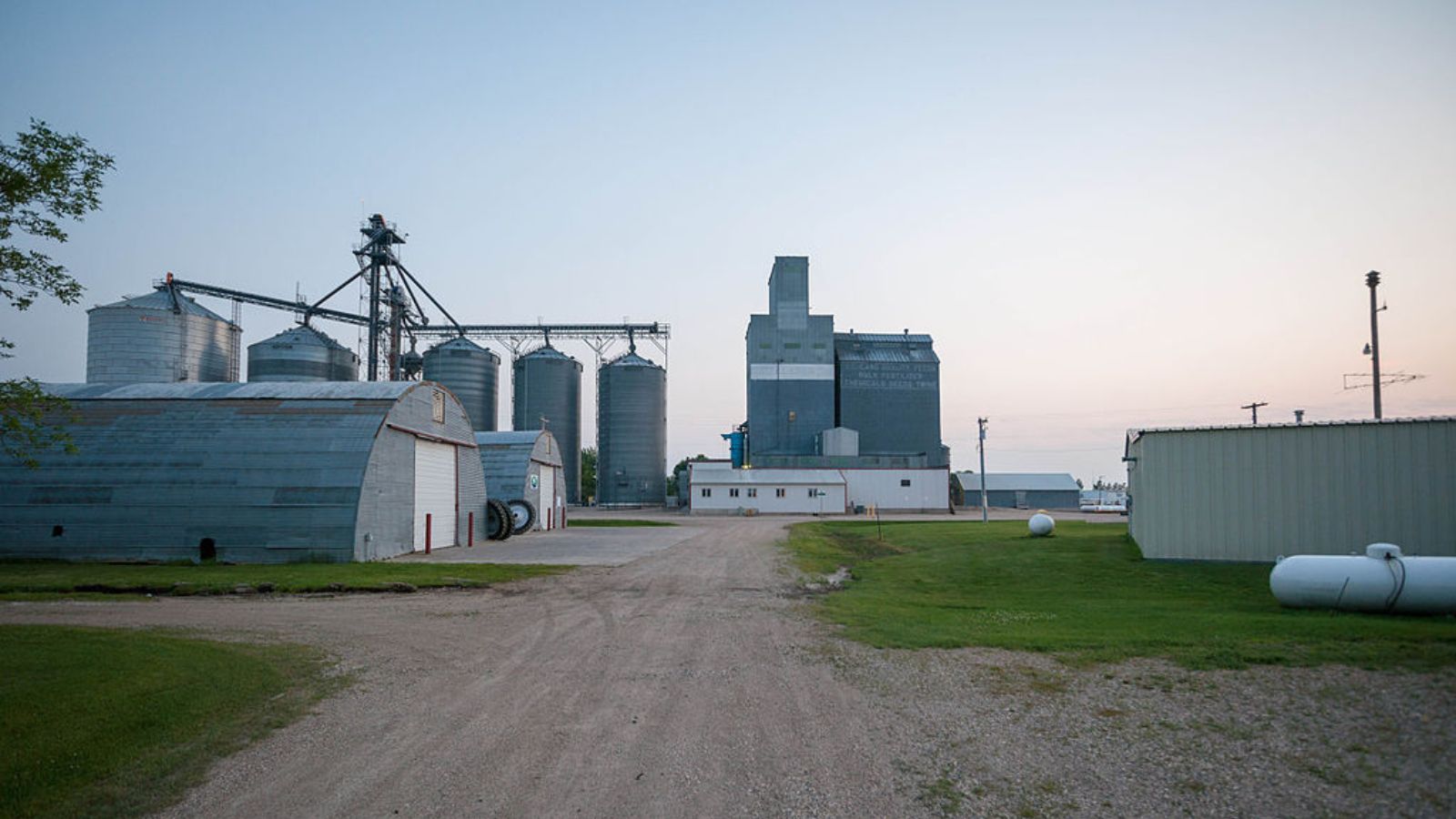
Why Are People Willing to Pay So Much to Live Here? What’s Special About It?
Colfax attracts buyers seeking premium rural living with modern amenities in a well-established agricultural community. The town offers spacious properties, quality construction, and peaceful environments that appeal to successful professionals and business owners. Residents value the agricultural heritage, community stability, and investment potential that come with limited housing inventory in desirable locations.
The area’s high property values reflect both the quality of available housing and the premium buyers place on authentic rural living near regional employment centers. Colfax provides the space, privacy, and community connections that define successful small-town living in North Dakota.
How Colfax Rose to Prominence
Colfax developed as a small agricultural community in the early 1900s, serving local farming operations in Richland County. The town grew around grain storage and agricultural services that supported area farmers, establishing itself as a regional agricultural center. Early settlers brought farming expertise that created the agricultural traditions that continue today.
The community maintained steady growth through agricultural prosperity while adapting to modern farming techniques and changing economic conditions. Colfax has preserved its rural character while attracting residents who appreciate both agricultural heritage and contemporary living standards in a peaceful, well-maintained community.
3 Interesting Tidbits
1. Premium Properties – Colfax commands some of the highest rural property values in North Dakota, reflecting the quality of housing and community desirability.
2. Agricultural Excellence – The town sits in prime farmland with many residents connected to successful agricultural operations that support the local economy.
3. Investment Appeal – Limited housing inventory and strong demand make Colfax properties attractive investments for those seeking rural real estate appreciation potential.
4. Kindred – 93% Home Price Increase Since 2010

- 2010: $208,856
- 2011: $204,729
- 2012: $194,332
- 2013: $205,379
- 2014: $212,533
- 2015: $239,986
- 2016: $266,946
- 2017: $270,072
- 2018: $273,774
- 2019: $298,221
- 2020: $316,808
- 2021: $347,042
- 2022: $383,862
- 2023: $378,602
- 2024: $391,445
- 2025: $402,665
Kindred has delivered outstanding growth of 93% since 2010, nearly doubling from around $209,000 to over $402,000. The community showed steady appreciation through most periods, with particularly strong gains from 2019-2022 when values jumped nearly $86,000. Recent years have brought continued growth to new highs, demonstrating sustained demand for this premium Fargo-area location.
Why Kindred?

Why Are People Willing to Pay So Much to Live Here? What’s Special About It?
Kindred combines excellent schools, family-friendly neighborhoods, and small-town character with convenient access to Fargo employment opportunities. The community is renowned for its outstanding school district, which consistently ranks among North Dakota’s best and attracts families from surrounding areas. Residents enjoy larger lots, newer housing developments, and the safety and community connections that make Kindred ideal for raising children.
The town has maintained careful growth management that preserves its small-town appeal while accommodating demand from Fargo commuters. Property values reflect the premium buyers place on quality education, safe neighborhoods, and the lifestyle advantages of rural living with metropolitan access.
How Kindred Rose to Prominence
Kindred was platted in 1880 when the railroad extended to that point, named after William A. Kindred, a Fargo businessman and future mayor. The town grew as a railroad stop and agricultural center serving southeastern Cass County farmers. A post office has operated since 1881, and the community was incorporated as a city in 1949.
The Kindred Public School District was organized in 1875, establishing the educational excellence that continues to define the community. As Fargo expanded, Kindred evolved into a premier bedroom community while maintaining its agricultural heritage and small-town character. The combination of excellent schools and rural lifestyle has made it one of North Dakota’s most sought-after family communities.
3 Interesting Tidbits
1. School Legacy – Kindred’s school district, established in 1875, is one of the oldest and most respected in North Dakota, consistently producing top academic results.
2. Railroad Heritage – The town’s origins as a railroad stop are preserved in its layout and historic connections to transportation that shaped early development.
3. Family Destination – Kindred is widely recognized as one of the best places in North Dakota to raise children, driving residential demand from young families.
3. Argusville – 29% Home Price Increase Since 2022

- 2010: N/A
- 2011: N/A
- 2012: N/A
- 2013: N/A
- 2014: N/A
- 2015: N/A
- 2016: N/A
- 2017: N/A
- 2018: N/A
- 2019: N/A
- 2020: N/A
- 2021: N/A
- 2022: $329,042
- 2023: $331,269
- 2024: $363,087
- 2025: $422,969
Argusville has experienced explosive recent growth of 29% since 2022, jumping from around $329,000 to nearly $423,000. The most dramatic appreciation occurred between 2024 and 2025, when values increased by almost $60,000 in a single year. This rapid growth places Argusville among North Dakota’s hottest real estate markets and most expensive small communities.
Why Argusville?

Why Are People Willing to Pay So Much to Live Here? What’s Special About It?
Argusville offers residents an exclusive rural lifestyle just 15 miles north of Fargo, combining small-town charm with convenient metropolitan access. The community attracts successful professionals and business owners who appreciate larger properties, custom homes, and the privacy that comes with rural living. Families value the safe environment, excellent schools, and strong community bonds that make Argusville special.
The town’s location along Old Highway 81 provides both historic character and easy access to Interstate 29 for Fargo commuters. Limited housing inventory and careful development standards maintain exclusivity while ensuring property values continue appreciating in this premier location.
How Argusville Rose to Prominence
Argusville was incorporated on May 31, 1921, and named after the Fargo Argus, North Dakota’s first daily newspaper. The town attracted settlers to the nutrient-rich farmlands of the Red River Valley, with many families arriving from Wisconsin bringing farming expertise. Early Argusville hosted numerous businesses including grain elevators, general stores, hotels, and agricultural services.
The community thrived as an agricultural center before evolving into a premium bedroom community for Fargo professionals. Modern Argusville has preserved its historic character while developing into one of North Dakota’s most exclusive small towns, attracting residents who value both heritage and contemporary amenities.
3 Interesting Tidbits
1. Newspaper Heritage – Argusville is uniquely named after the Fargo Argus newspaper, reflecting the important role media played in early North Dakota development.
2. Wisconsin Connection – Many original settlers came from Wisconsin, bringing farming expertise and family names that still appear on local businesses and properties.
3. Historic Highway – The town sits along Old Highway 81, a historic route that connected Fargo to Grand Forks and played a crucial role in early North Dakota transportation.
2. Baldwin – 9% Home Price Increase Since 2022

- 2010: N/A
- 2011: N/A
- 2012: N/A
- 2013: N/A
- 2014: N/A
- 2015: N/A
- 2016: N/A
- 2017: N/A
- 2018: N/A
- 2019: N/A
- 2020: N/A
- 2021: N/A
- 2022: $418,458
- 2023: $411,205
- 2024: $437,107
- 2025: $454,472
Baldwin has achieved solid growth of 9% since 2022, climbing from around $418,000 to over $454,000. After a small dip in 2023, the market recovered strongly in 2024 and continued climbing in 2025. These premium price levels place Baldwin among North Dakota’s most expensive communities, reflecting the scarcity and desirability of rural properties near major population centers.
Why Baldwin?

Why Are People Willing to Pay So Much to Live Here? What’s Special About It?
Baldwin attracts buyers seeking ultimate rural privacy and space while maintaining reasonable access to Bismarck employment and services. This unincorporated community offers large properties, custom-built homes, and the peaceful environment that appeals to successful professionals and business owners. The area provides genuine country living with agricultural connections and wide-open spaces that are increasingly rare near major cities.
Limited housing inventory and strict development standards maintain exclusivity while preserving the rural character that makes Baldwin special. Property values reflect the premium buyers place on privacy, space, and authentic rural living within commuting distance of the state capital.
How Baldwin Rose to Prominence
Baldwin developed as a small unincorporated community in Burleigh County, serving local agricultural operations near the state capital region. The area grew around farming and ranching activities, with early settlers establishing the agricultural traditions that continue today. Baldwin maintained its rural character even as Bismarck expanded, attracting residents who valued country living over urban convenience.
The community has preserved its agricultural heritage while becoming a destination for those seeking premium rural properties near the capital city. Baldwin’s appeal lies in its ability to provide genuine rural living with space and privacy while keeping reasonable access to Bismarck employment and services.
3 Interesting Tidbits
1. Unincorporated Status – Baldwin remains an unincorporated community, allowing residents to maintain rural character while benefiting from county services and lower regulatory oversight.
2. Capital Access – Despite its rural setting, Baldwin provides reasonable access to Bismarck employment, making it attractive to state government workers and professionals seeking country living.
3. Agricultural Heritage – The area maintains strong connections to farming and ranching operations that have supported the community for over a century.
1. Reiles Acres – -16% Home Price Decrease Since 2022

- 2010: N/A
- 2011: N/A
- 2012: N/A
- 2013: N/A
- 2014: N/A
- 2015: N/A
- 2016: N/A
- 2017: N/A
- 2018: N/A
- 2019: N/A
- 2020: N/A
- 2021: N/A
- 2022: $658,560
- 2023: $582,333
- 2024: $529,725
- 2025: $554,019
Reiles Acres tops the list despite experiencing a 16% decline since 2022, falling from a peak of nearly $659,000 to around $554,000. Even after this significant correction, the community maintains North Dakota’s highest home values by a substantial margin. The recent recovery in 2025 suggests the market may be stabilizing at these premium levels.
Why Reiles Acres?
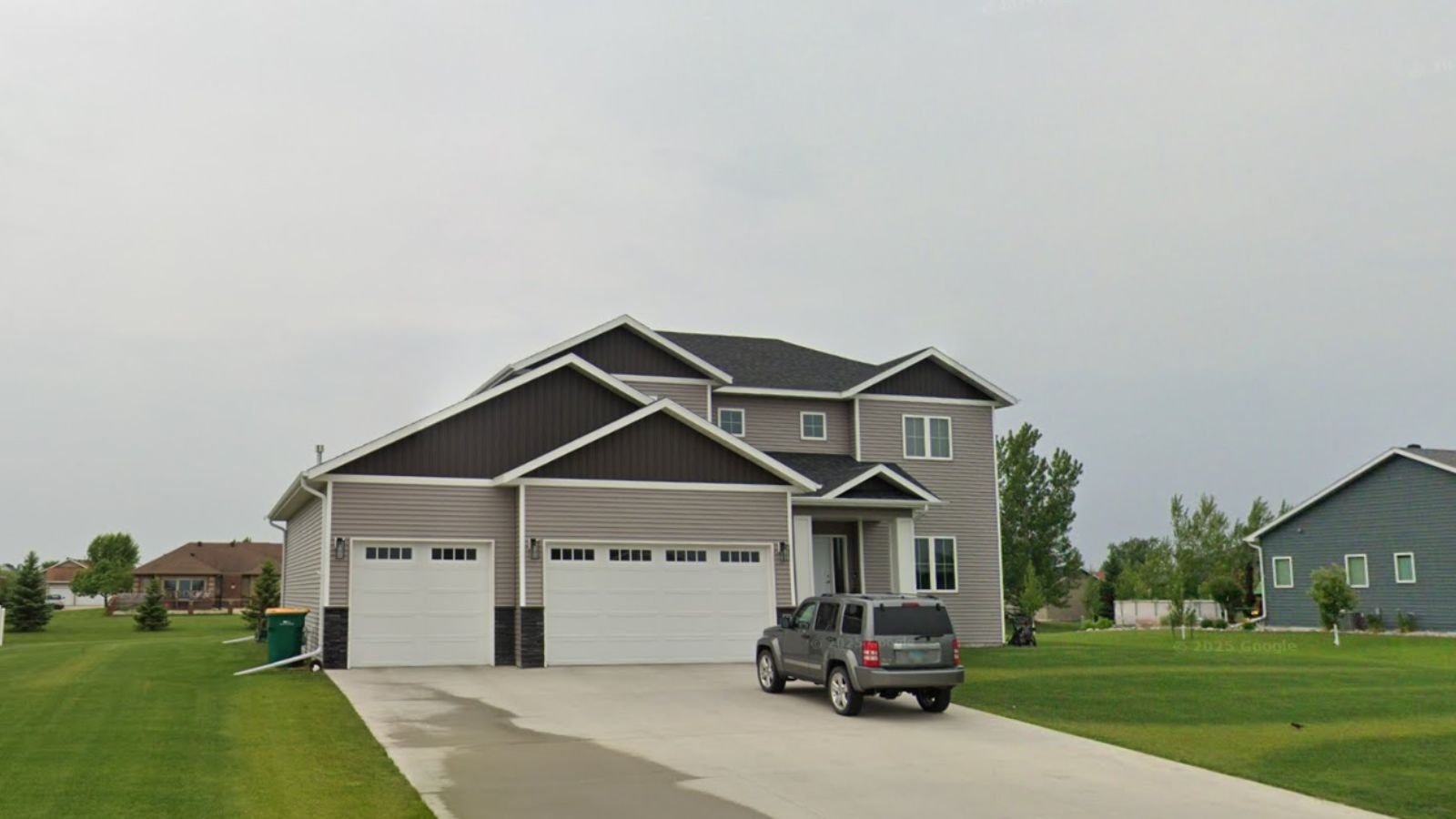
Why Are People Willing to Pay So Much to Live Here? What’s Special About It?
Reiles Acres represents the pinnacle of North Dakota suburban living, offering exclusive neighborhoods with custom homes, large lots, and premium amenities just minutes from Fargo. The community attracts the region’s most successful professionals, executives, and business owners who can afford the state’s highest housing costs. Residents enjoy exceptional privacy, quality construction, and the prestige that comes with living in North Dakota’s most expensive community.
The city maintains strict development standards and zoning that preserve property values and community character. With a median household income of $198,333 and virtually no poverty, Reiles Acres offers a lifestyle and community quality unmatched elsewhere in the state.
How Reiles Acres Rose to Prominence
Reiles Acres was incorporated in 1977 on land originally owned by Reinhold Reile, who had a farmstead on the site. The community was developed when the area’s growth exceeded what Reed Township could manage, leading residents to seek incorporation for better services and infrastructure funding. Starting with just 147 residents, the planned community grew carefully while maintaining high development standards.
The city was designed as a premium suburban community for Fargo-area professionals seeking upscale housing and amenities. From its beginning, Reiles Acres attracted successful residents who could afford higher housing costs in exchange for quality, exclusivity, and proximity to Fargo employment. The community has maintained these standards while growing to become North Dakota’s most expensive housing market.
3 Interesting Tidbits
1. Exclusive Demographics – With a median household income of $198,333 and poverty rate of just 1%, Reiles Acres has the highest income levels and lowest poverty rate in North Dakota.
2. Planned Community – The city was specifically designed as an upscale suburban community, with development standards and zoning that maintain property values and community character.
3. Fargo Access – Despite commanding the state’s highest home prices, Reiles Acres provides easy access to Fargo employment and amenities while maintaining complete suburban privacy and exclusivity.

